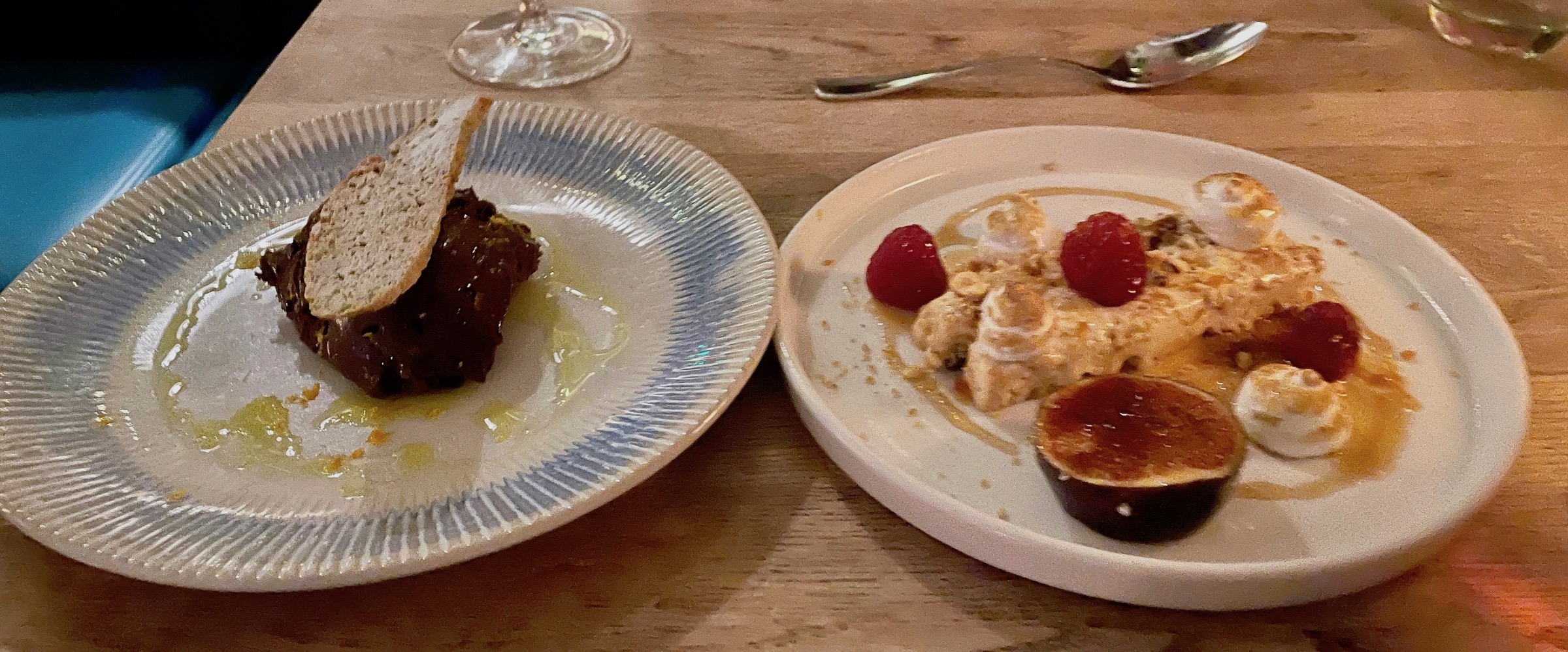Bath – Britain’s Georgian Masterpiece
In the autumn of 2022 Alison and I decided to finally visit the English city of Bath, a place I had on my destination wish list for many decades. In this post I’ll describe the many reasons why you shouldn’t wait so long to visit this UNESCO World Heritage Site.
In a previous post I described a very full day in the city of Reading which surprised us with its great museum and abbey ruins as well as the walking paths alongside the Thames. While Reading might fly under most tourist’s radar, Bath definitely does not. It is one of the few places in the world to receive two inscriptions as a UNESCO World Heritage Site. The first came in 1987 when it was recognized for its natural hot springs, Roman bath, Georgian architecture and beautiful landscape which combine to make it a truly unique city. In 2021 it was recognized by UNESCO as one of the Great Spa Towns of Europe along with ten other places including the eponymous town in Belgium where the word spa first became associated with rest, relaxation and curative powers.
History of Bath
Time now for a little more detail on the history of this place.
Unlike most British cities and towns, Bath has a definitive foundation date. In 60 AD the Romans, who had conquered this part of England only a few years earlier, took advantage of the natural thermal springs in the area to build a bath complex and temple. They named the place Aquae Sulis and it flourished as a Roman town for at least a couple of hundred years. The Romans left Britain in 383 and for the next three hundred years or so Aquae Sulis faded into obscurity to the point that people of the time did not even know it has existed. In the 7th century the first of a series of abbeys was built, once again based on the presumption that the thermal springs had natural curative properties. The abbey that stands today dates mostly from the 16th century. The final attraction in the Bath trifecta was the resurrection of the town as a spa in the Georgian era complete with some of the best examples of Georgian architecture to be found anywhere. Under the guidance of the celebrated dandy Beau Nash, Bath became one of the first towns to be systematically planned and built in a manner that was intended to be both livable and aesthetically pleasing. The great wonder is that all of it is still here, undisturbed by the 20th century madness that saw hundreds of English towns and cities gutted of their architectural history in the name of ‘urban renewal’. So there’s a lot to see in Bath, but before setting out to explore the city, let’s find a place to stay.
Dukes Hotel
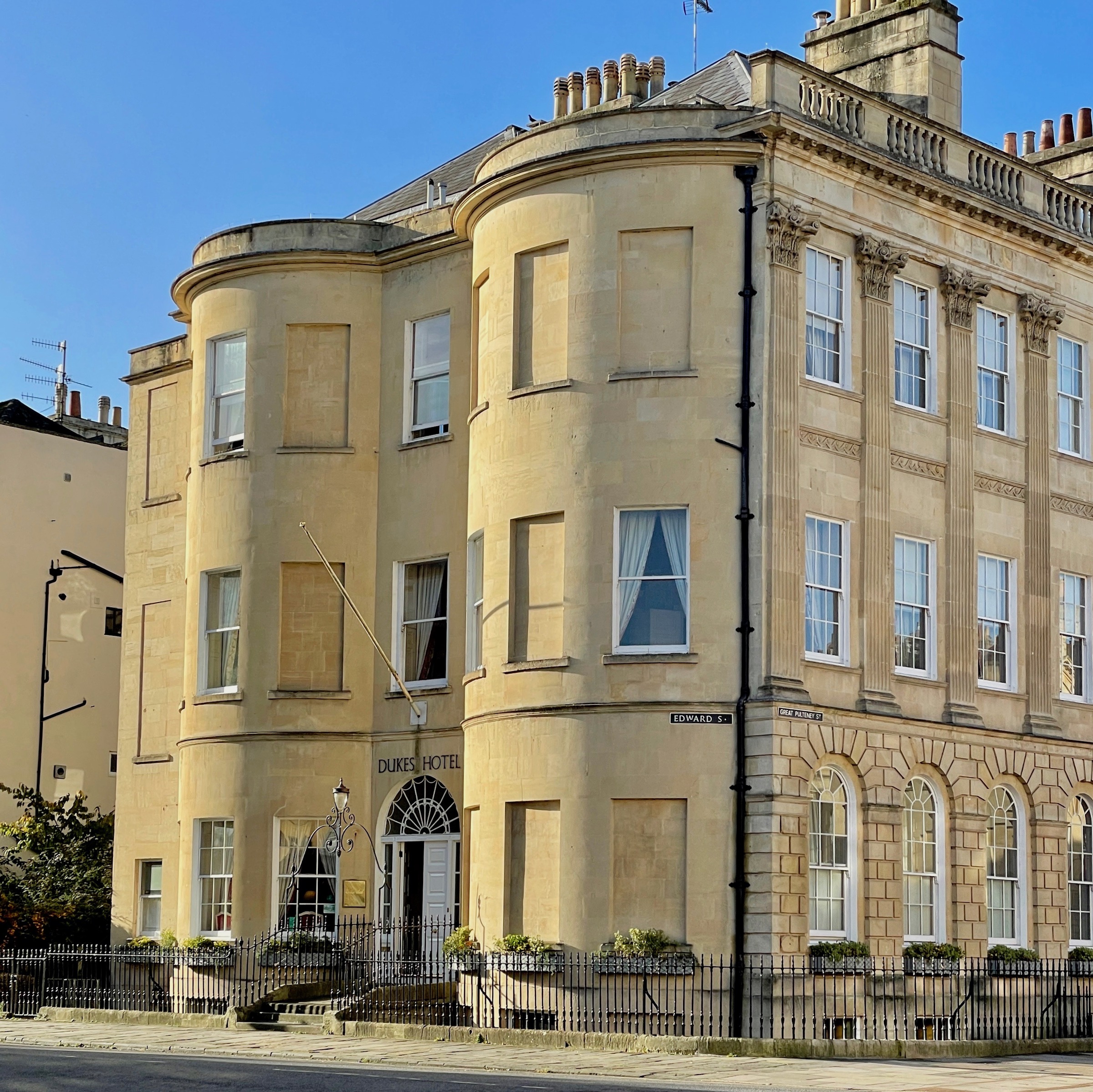
Not surprisingly, there are a lot of great places to stay in Bath, including the world famous Royal Crescent Hotel & Spa located in arguably the most famous Georgian building in the world. However, at over $1,100.00 a night for even the cheapest room, I had to content myself with simply looking at it.

I did know that I wanted to stay in one of signature hotels located inside the Georgian part of the city. None of these are cheap, but offer a far more authentic Bath experience than staying in one of the modern featureless chain hotels that are not that much less expensive. Based on reviews in Trip Advisor I chose Dukes Hotel which is located in two adjacent Georgian townhouses on Great Pulteney Street, one of the grandest thoroughfares in Europe. This is Alison walking to the hotel from the train station.
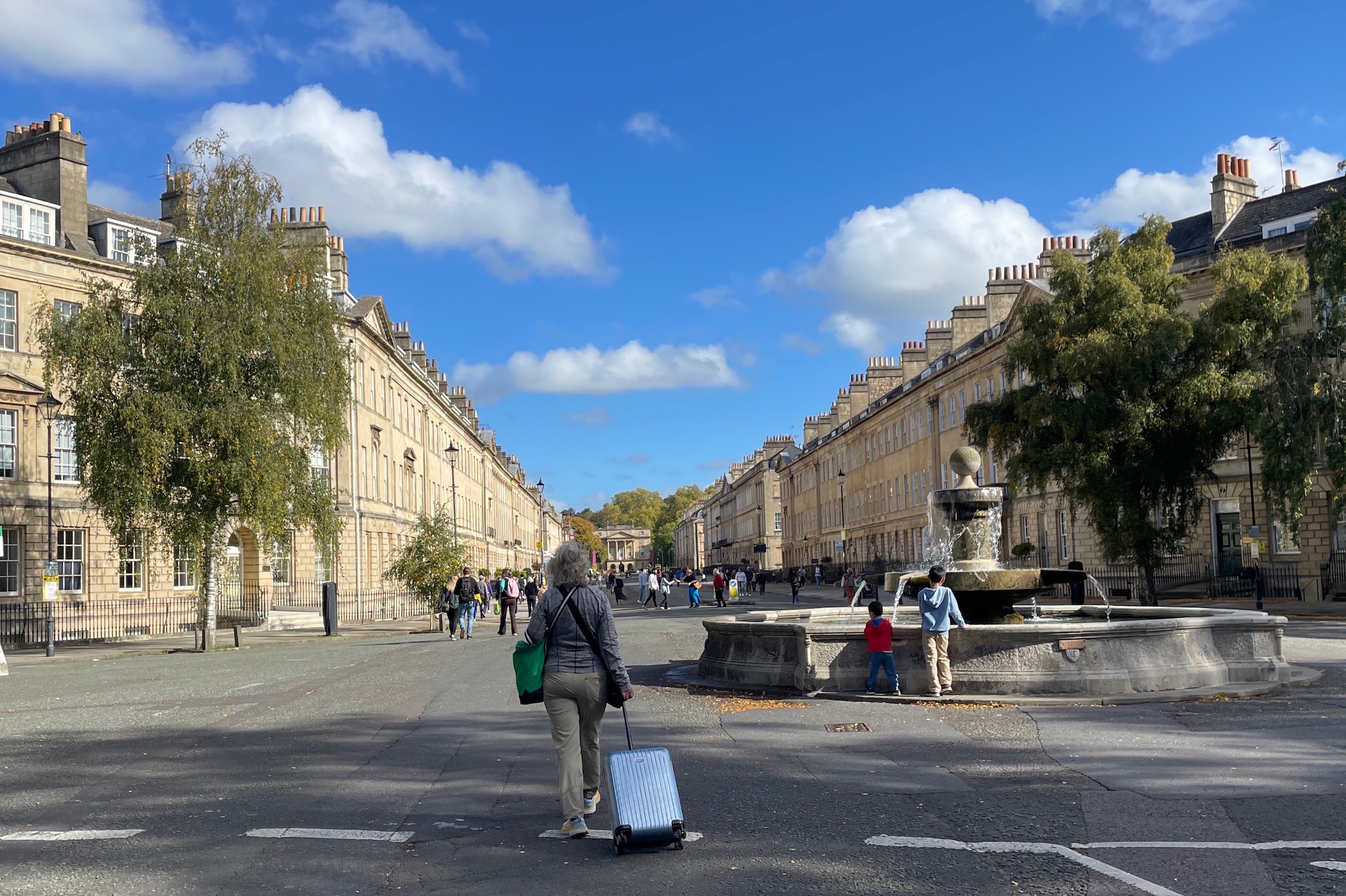
Dukes turned out to be a perfect choice. This is the Argyll Room where we spent three nights. Forgive the mess.
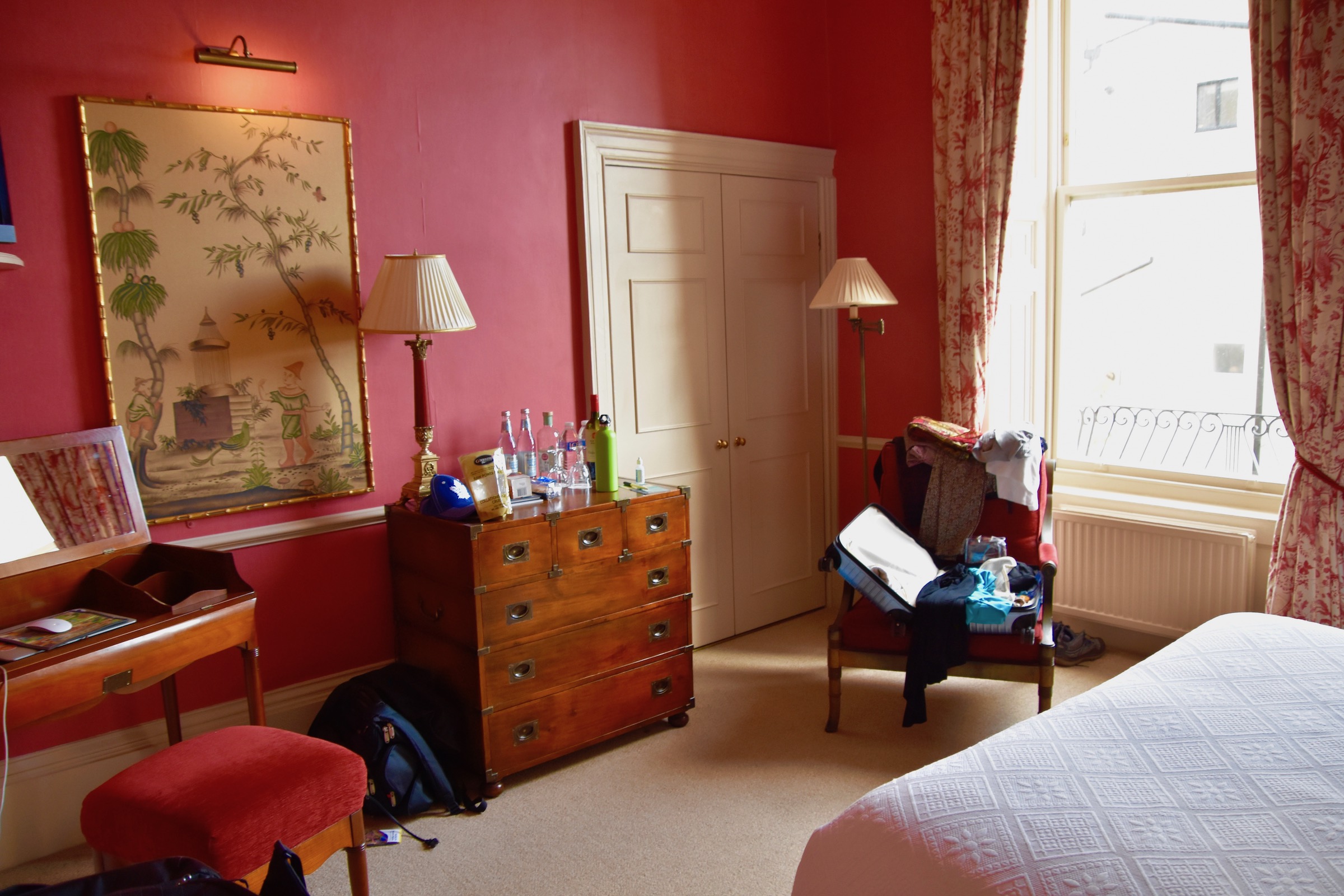
One of the best things about the place aside from its great location and nice rooms was the breakfast each morning that was anything but your stereotypical ‘full English breakfast’ with enough heart clogging calories to induce an instant heart attack. Here are some of the dishes we tried.

I simply had to try the kippers, despite previous bad experiences with same, but these were actually very good.

The poached eggs on toast were simply wonderful. And to their credit, the coffee was quite good.
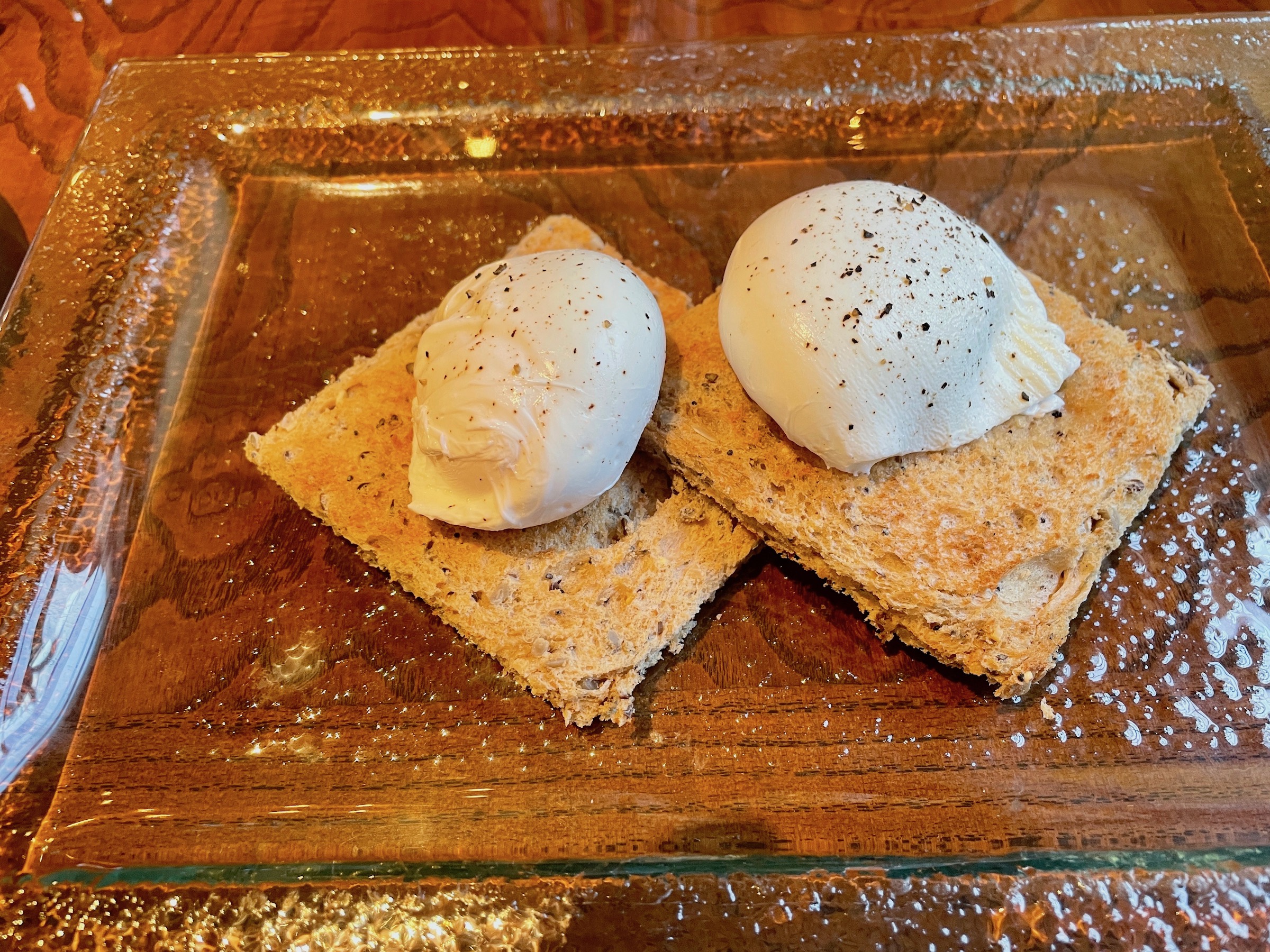
So now that we’ve got a place to stay let’s begin our Bath adventure with a boat ride.
The Avon River
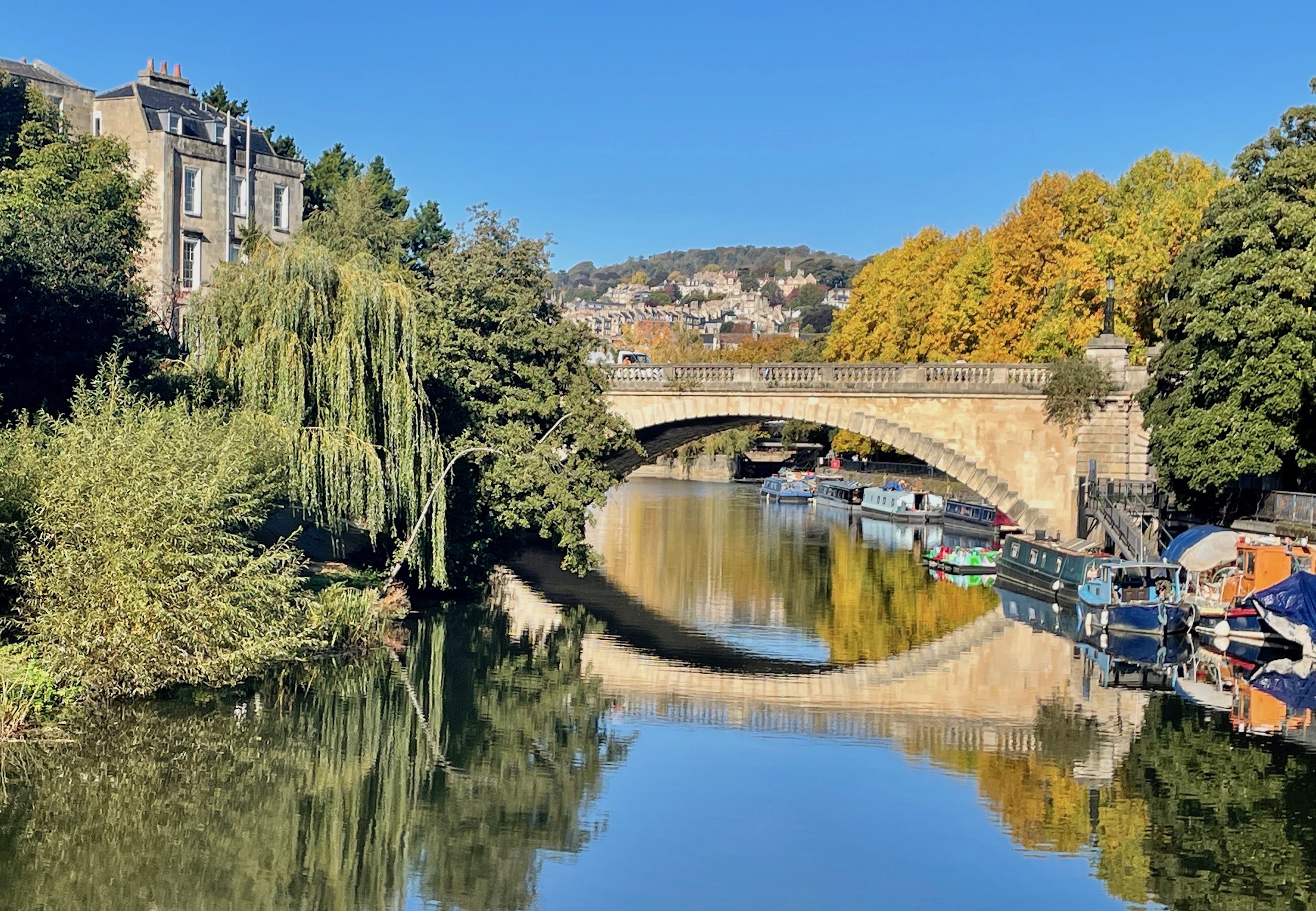
The River Avon is among the most famous in England what with being the home town of Shakespeare, the Bard of Avon. However, much to my surprise the River Avon in Bath is not the same river as that which flows through Stratford. Turns out there are a lot of River Avons in this area of southeast England and Wales since the word avon simply means river in Welsh. So essentially what I’m looking at in the photo above is the River River. But enough with semantics, let’s find a boat.
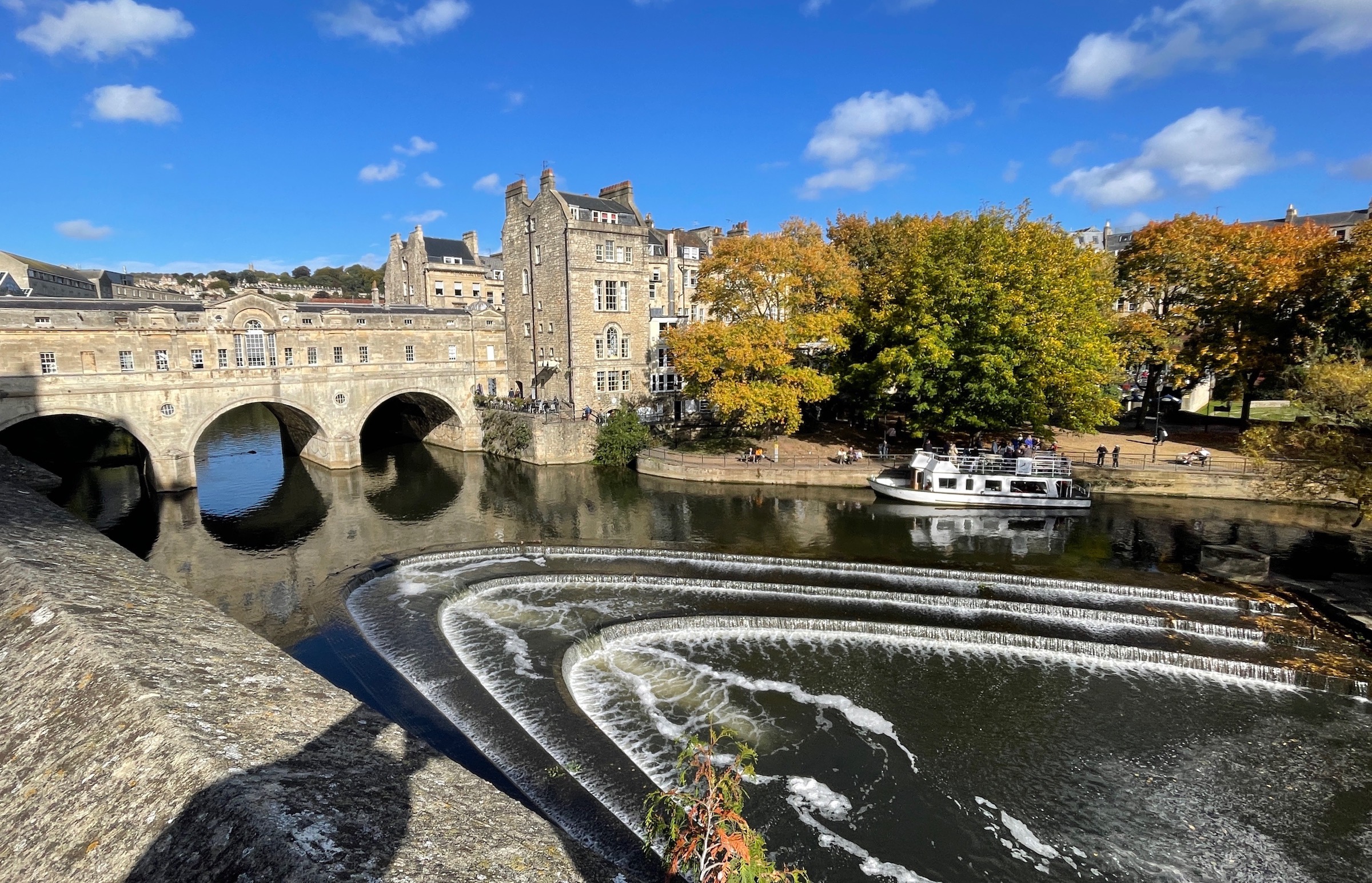
One of the most photographic sites in Bath is the Pulteney Bridge with the weir just below it. The bridge dates from 1770 and is one of only four in the world that has shops on both sides of its length. The weir is even older, first appearing on maps in 1603. The boat you see is operated by Pulteney Cruisers and for a very fair price of £11 provides an hour long cruise up the River Avon to the next weir at Bathhampton and back. No need to pre-book, just hop on and enjoy a splendid trip starting off by passing under the historic bridge.
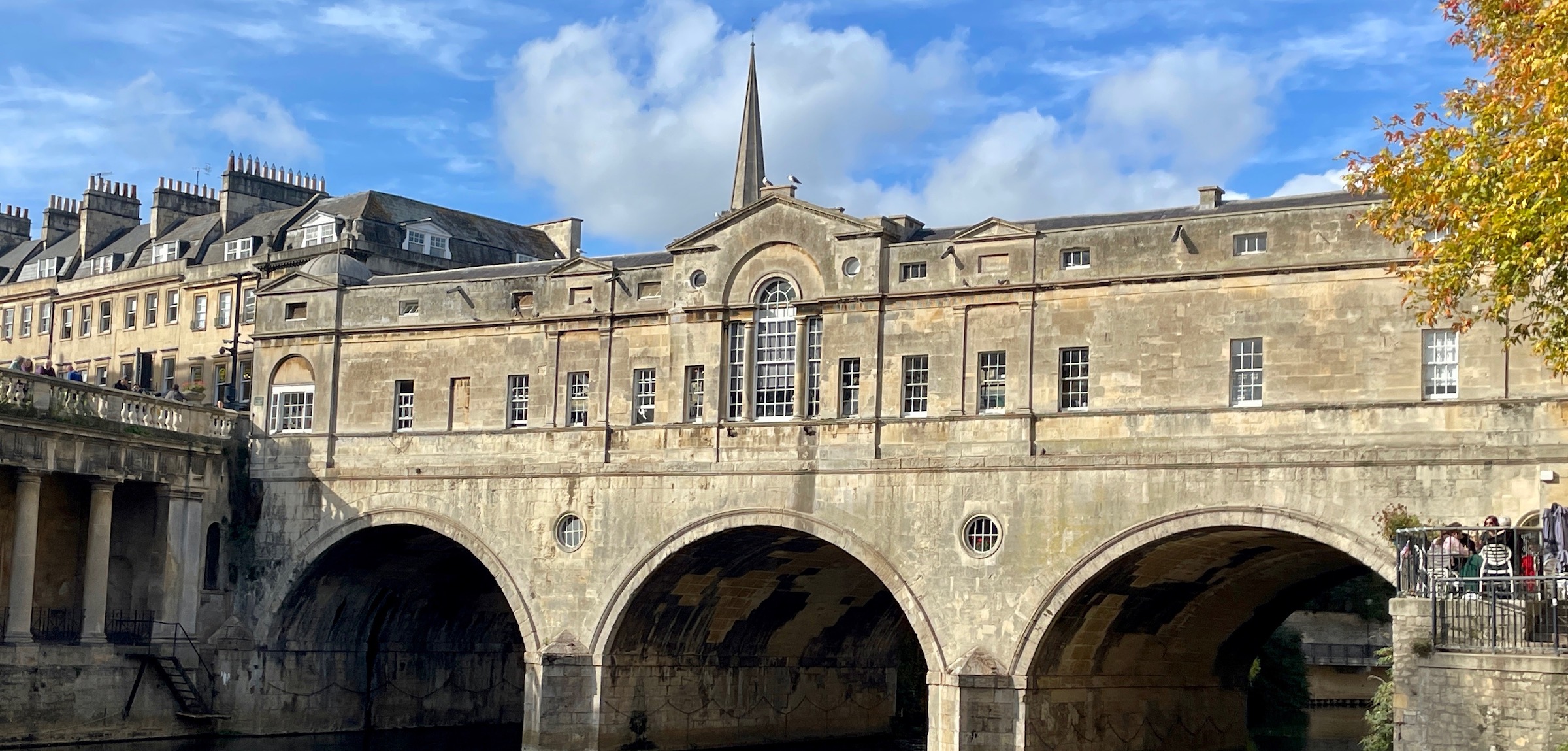
This is the midway point at Bathampton Weir. If you can find anything more typically English than this, please let me know.
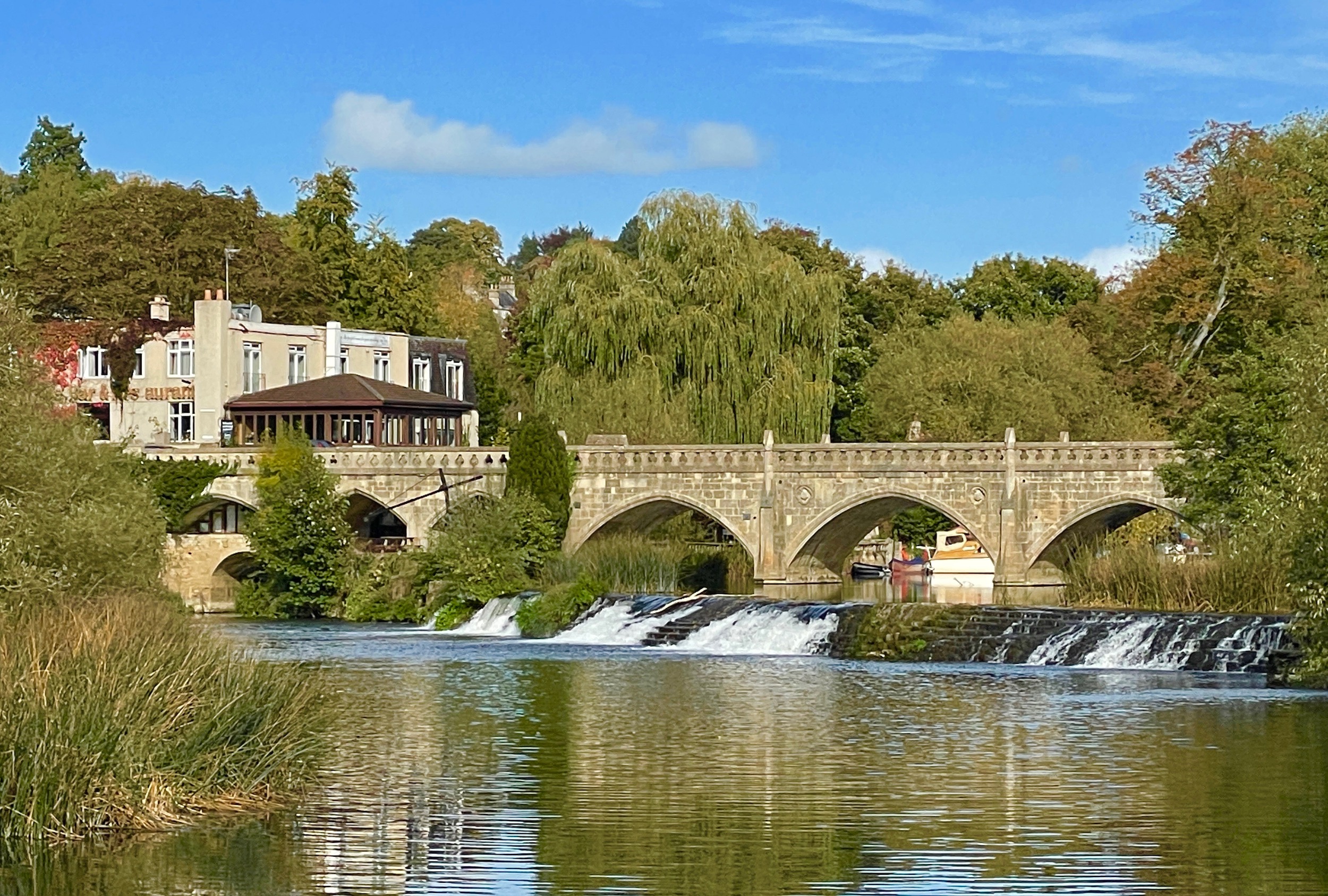
Walking Bath
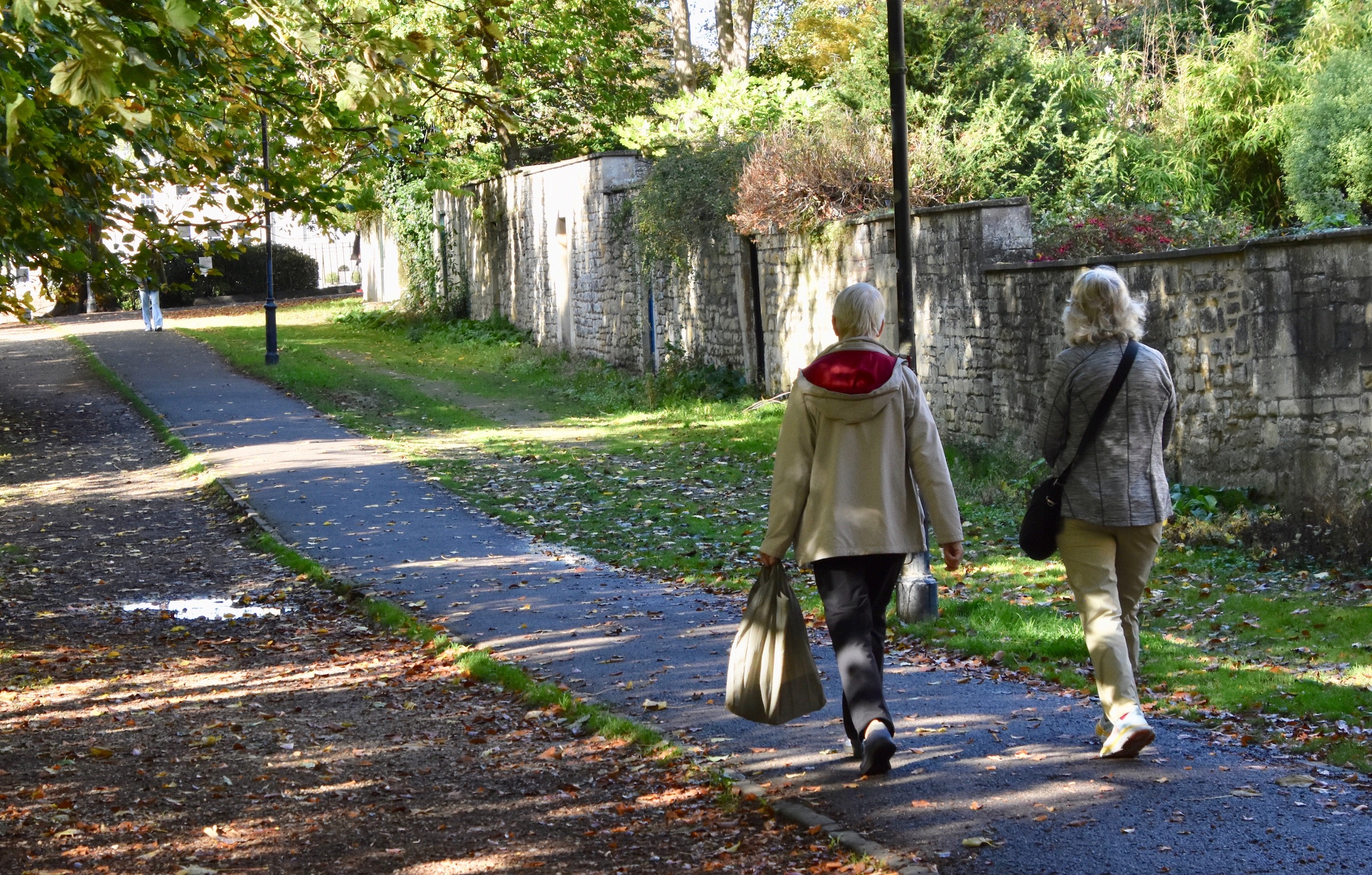
One of the things that makes visiting Bath so special is the pride that the local citizens have in their city and their willingness to share their enthusiasm and knowledge with strangers. Nowhere is this more apparent than with The Mayor of Bath’s Corps of Honorary Guides,a group of volunteers who provide free daily two hour walking tours of the city featuring aspects of Bath that would not be readily apparent to anyone just walking about on their own. The tours start from in front of the famous Pump Room right beside the entrance to the Roman baths. Like the boat tour, you don’t need to pre-book, but just show up for the 10:30 or 2:00 tour.
Arriving a few minutes early I noticed this plaque on the side of the Pump Room. Given the absolute feeling of tranquility that embues much of Bath, it is hard to imagine such a horror story being written here. Far easier to imagine the Bath Jane Austen knew and wrote about including the scene form her novel Persuasion that took place on the very Gravel Walk that Alison and our guide Sandra are walking this morning.
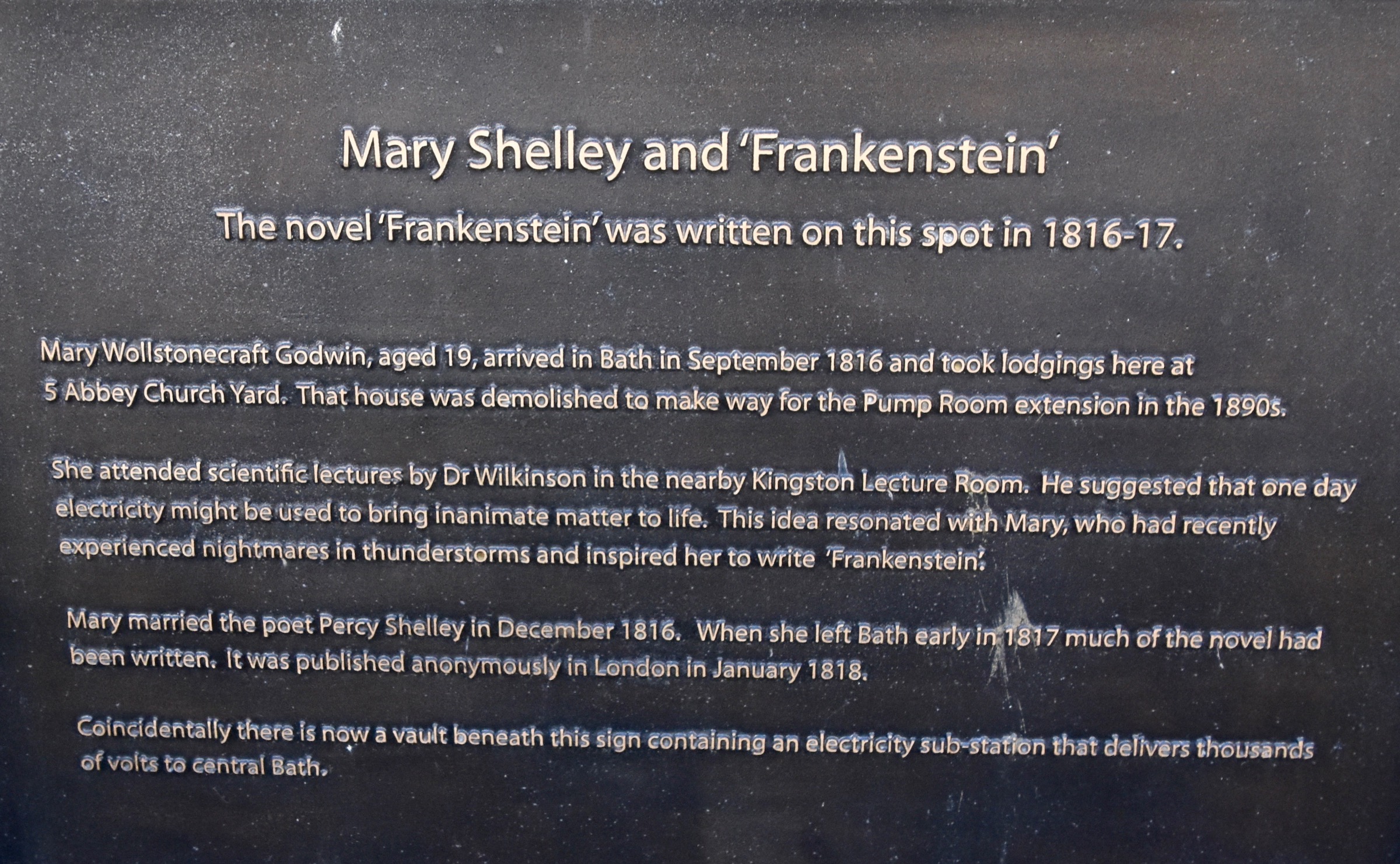
I won’t bother to note more than a few highlights from the city walk or else this post would go on forever. Suffice it to say you will learn a lot about the history of the city, especially that dating from the Georgian period.
This is one of the oldest continually surviving hospitals in Europe which was founded in 1174 by the abbey’s bishop. It was not a hospital as we think of it, but rather an almshouse which provided food and lodging to homeless people, often widows and the elderly. The current building dates from 1716 and still provides a free home to over 100 elderly poor souls. We tend to think of homelessness as a recent development, but the people of Bath have been dealing with it for over 850 years.
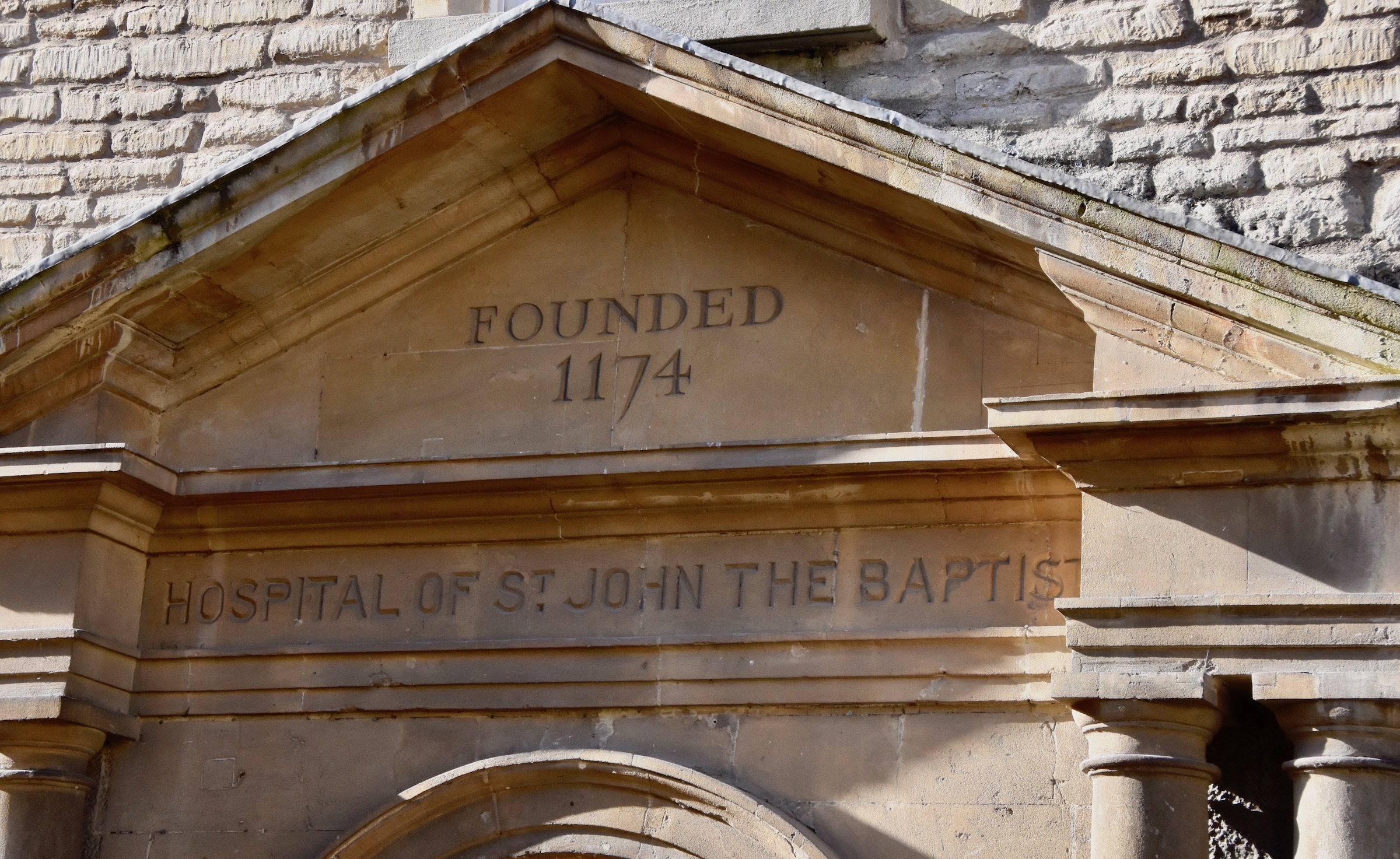
There is a Canadian connection on this walk as we pass the house where General Wolfe stayed after returning to England from the successful siege of Louisbourg to, in his words “Refit for another campaign.” As we know that campaign was the capture of the citadel of Quebec and his death on the Plains of Abraham.
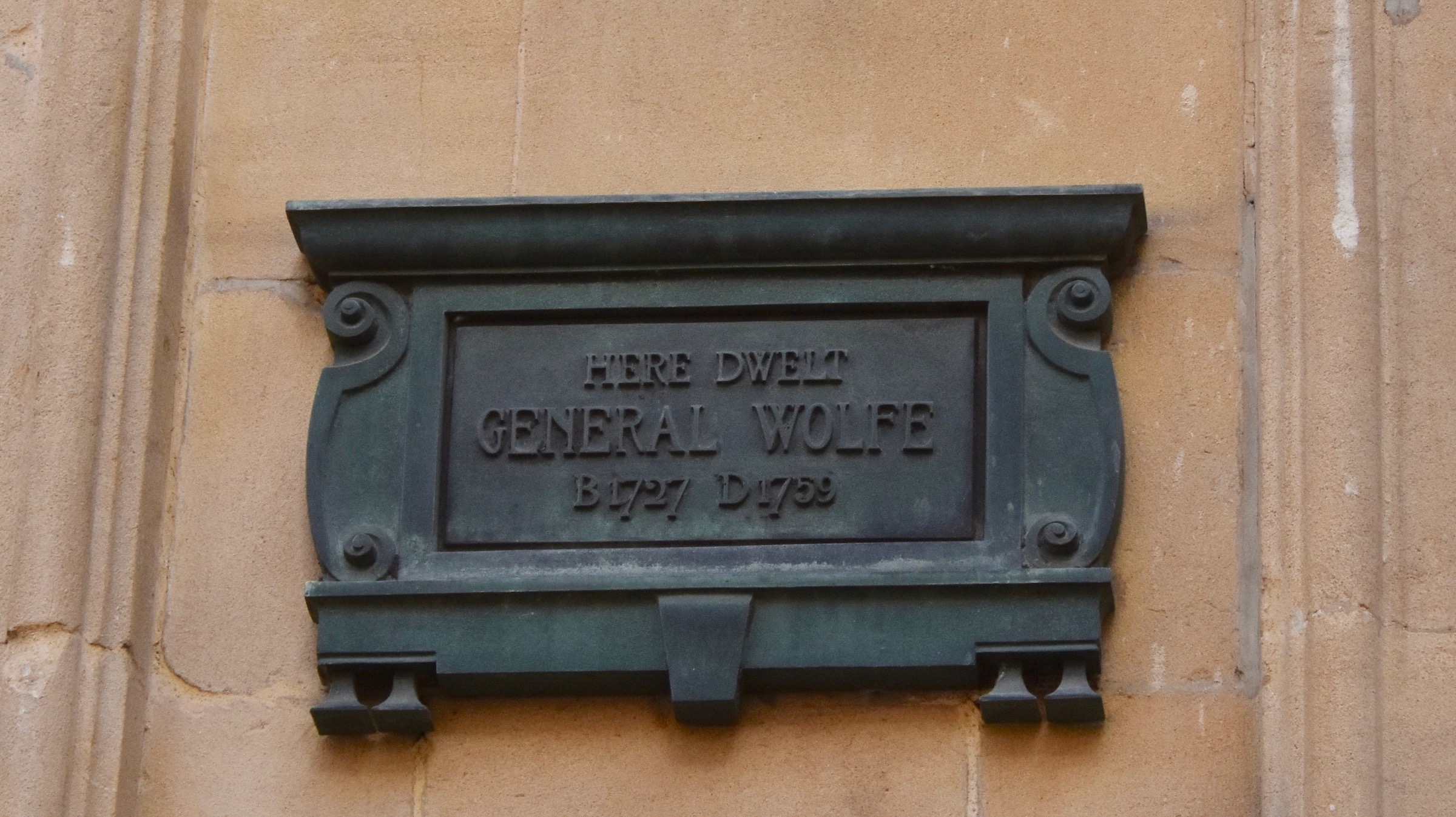
The walk encompassed much of the most famous Georgian architecture in Bath including the Royal Crescent, the photo of which is found earlier in this post as well as The Circus, a ring of crescent shaped buildings that form a circle. The architect John Wood the Elder based the design on the dimensions of Stonehenge.
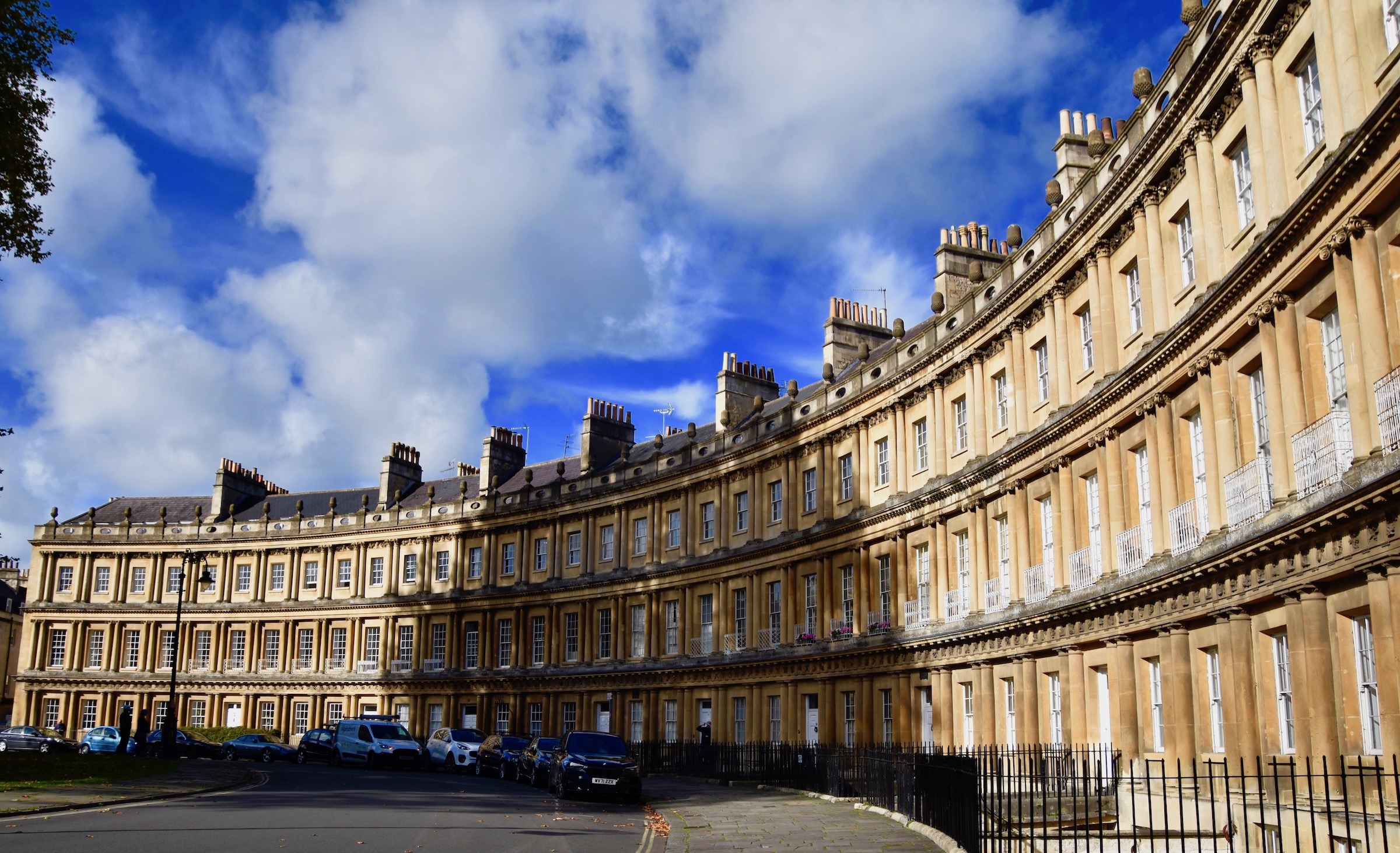
Back at the starting point we bid farewell to Sandra and continued exploring on our own starting with Bath Abbey which dominates the city skyline, but is difficult to get a decent complete picture of. This was the best I could do.
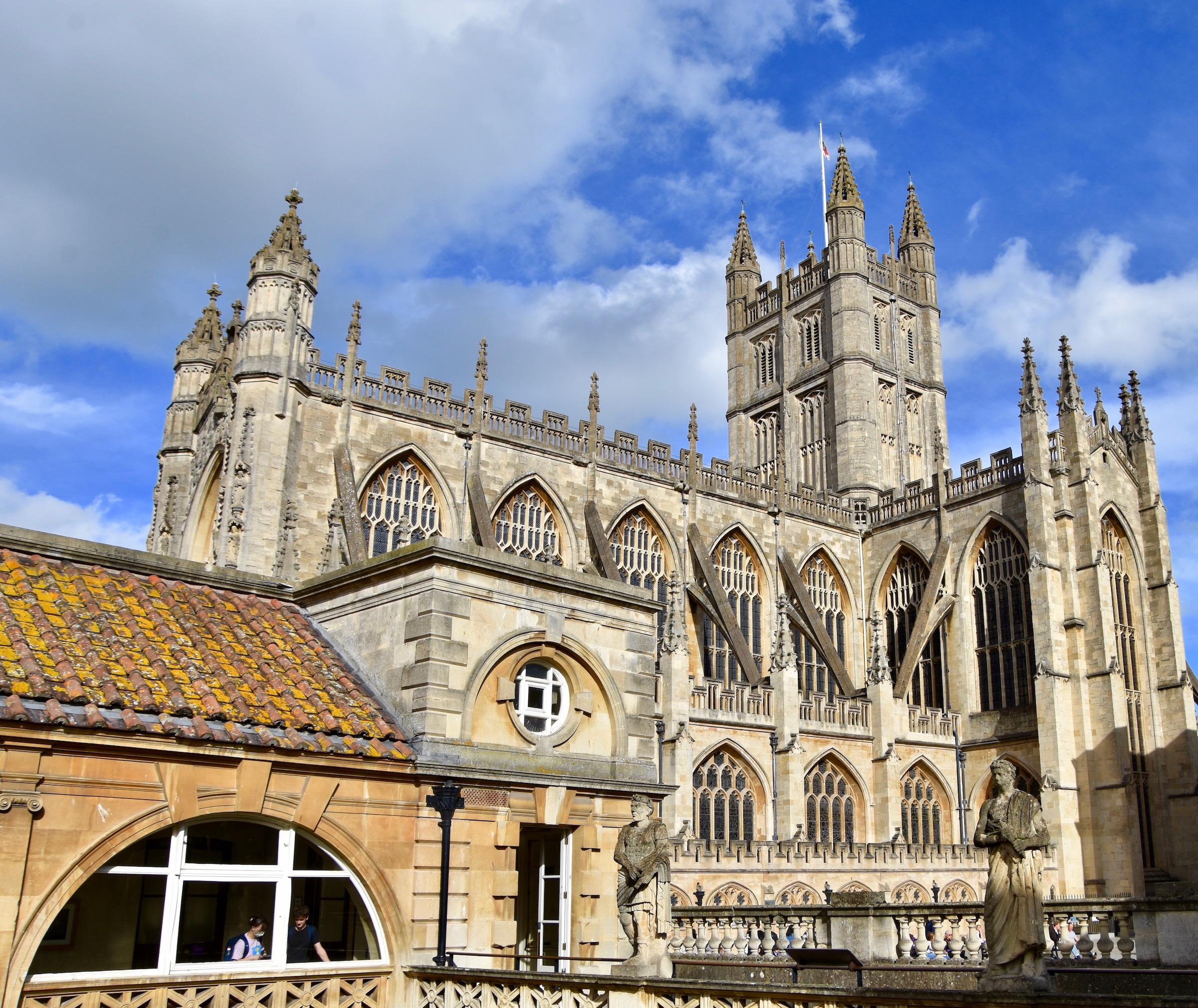
The history of the abbey and religious observance on this site dates back over 1,300 years with the establishment of a convent in 675 and then a monastery in 757. The Saxons built the first abbey and it was here that Edgar, great grandson of Alfred the Great was crowned King of England in 973. That event is commemorated in this magnificent stained glass window in the abbey. Note the Viking ship underneath the throne. Edgar’s reign was especially notable for the absence of Viking raids that had plagued the Saxons for many generations.
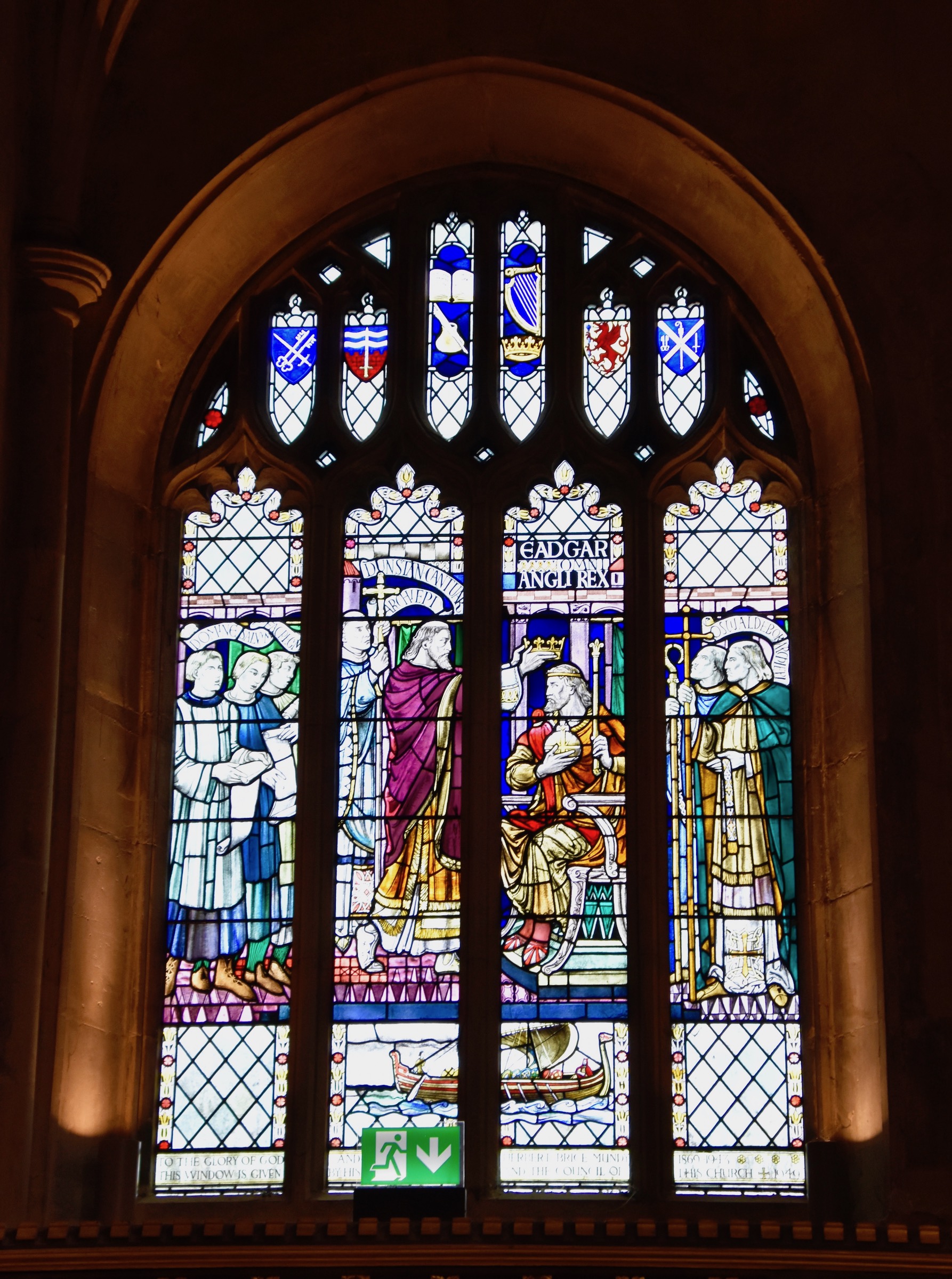
In 1088 the original Saxon abbey was replaced with a much larger building which attained cathedral status in 1244. However, by the end of the 13th century this Norman building had fallen into such disrepair that Bishop Oliver King ordered that an entirely new structure be erected and the building we see today dates from that period. The contribution of Bishop King to the creation of the new Bath Abbey is noted by the presence of his coat-of-arms near the main entrance.
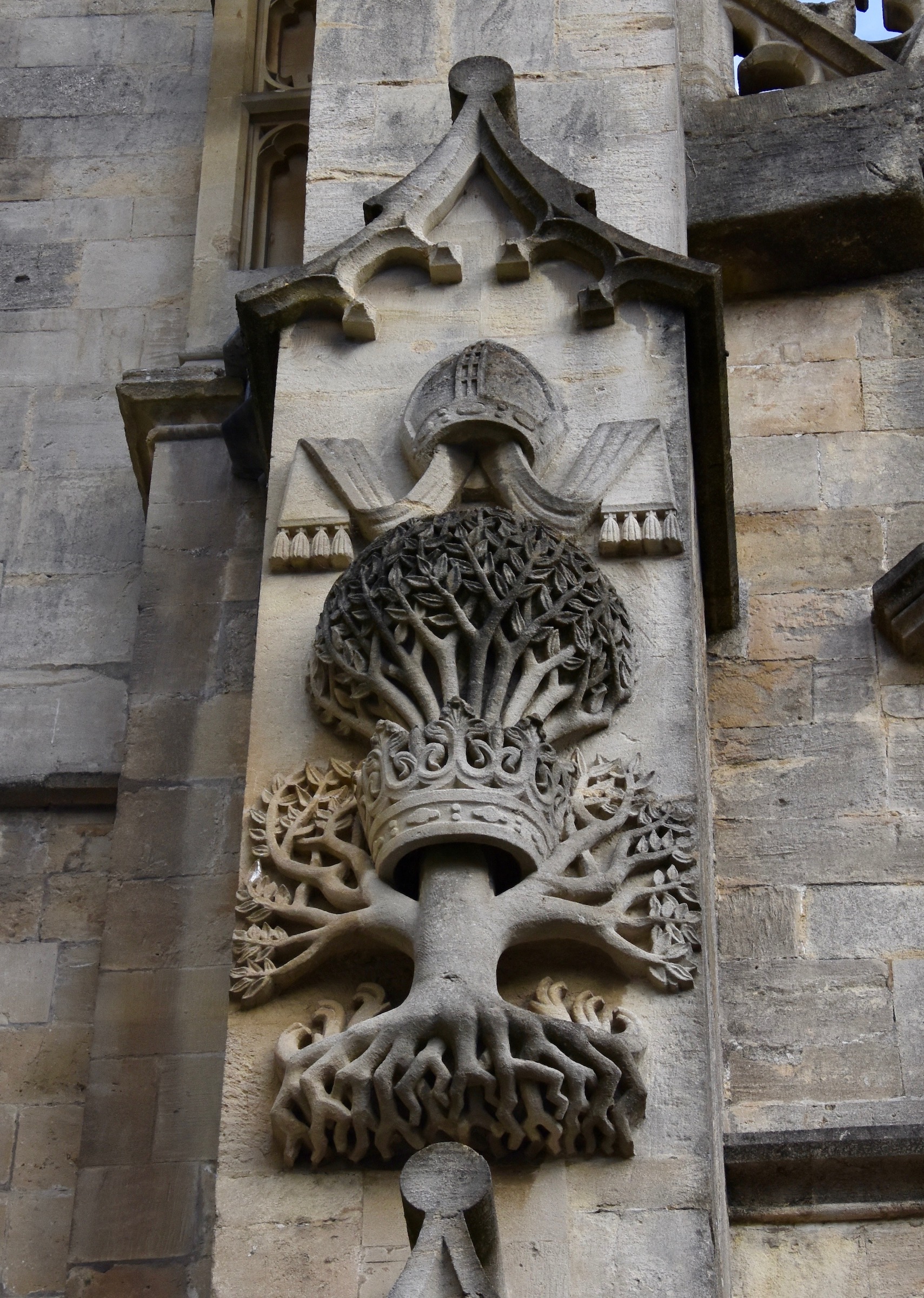
The new abbey had hardly been finished when Henry VIII disbanded the monastery in 1539 and booted the monks out and left the church to simply fall into disrepair, a reprise of what had happened to the Norman church. However, unlike many other famous monasteries and abbeys Henry did not raze Bath Abbey and by 1560 it was back in use as a parish church and with money from Queen Elizabeth I it was restored to its original state. However, it seems the work in perfecting the abbey never really stopped as major changes were made in the 1800’s, 1900’s and continue to this day with the Footprint project, aimed at stabilizing the ancient floor.
This is the front of the abbey which has a unique appearance created by the massive stained glass window that rises well over half the height of the entire building.
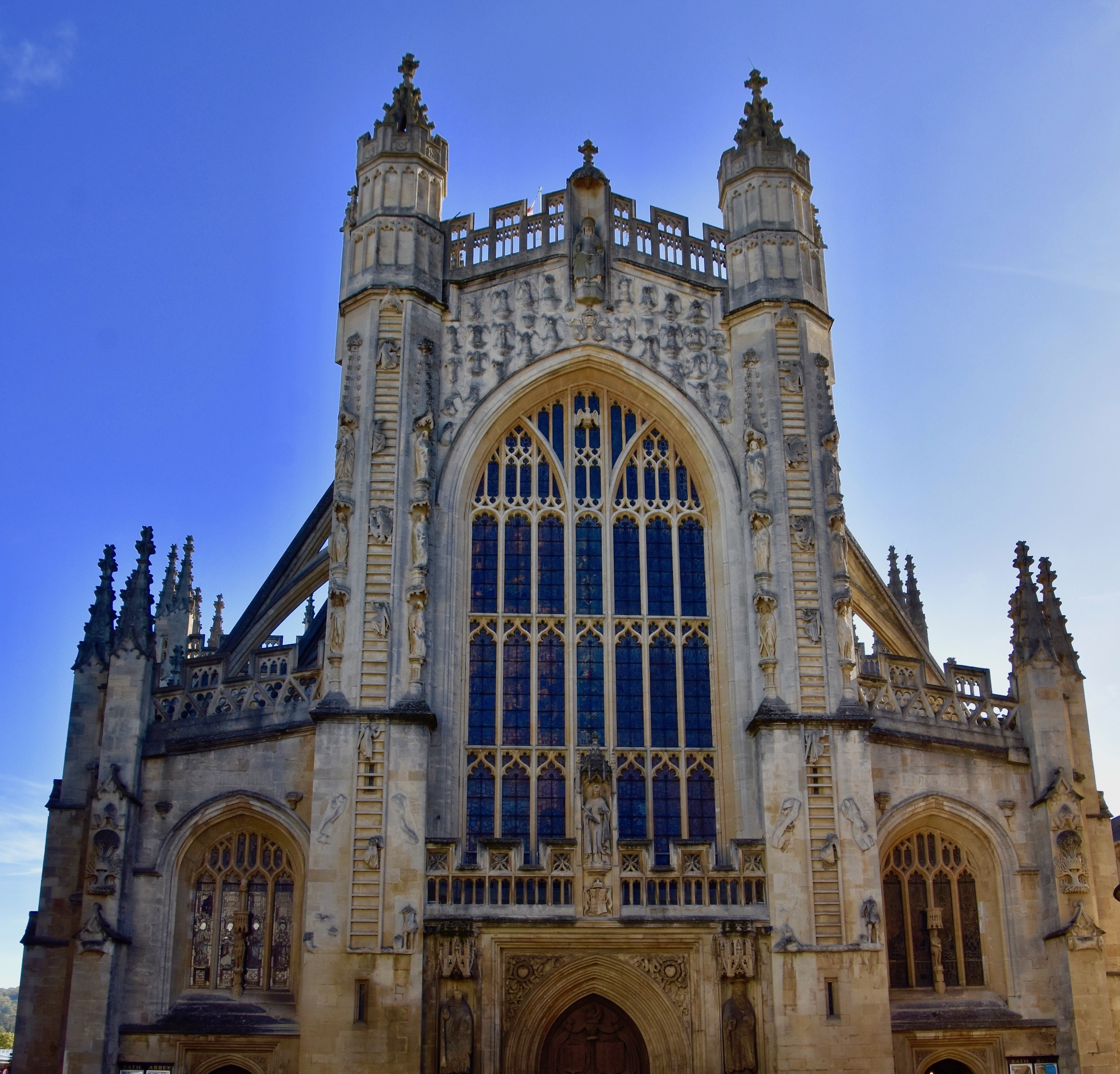
Below the window is this large carved wooden door which dates from the reconstruction ordered by Elizabeth I. The Latin inscription Ecce quam bonum et quam jucundum est translates as ‘ Behold how pleasing it is.’ a not so subtle boast from Lord Chief Justice Montagu who paid for it and included his coat-of-arms n the mix. Today it is ceremonial only and one enters through a much smaller door.
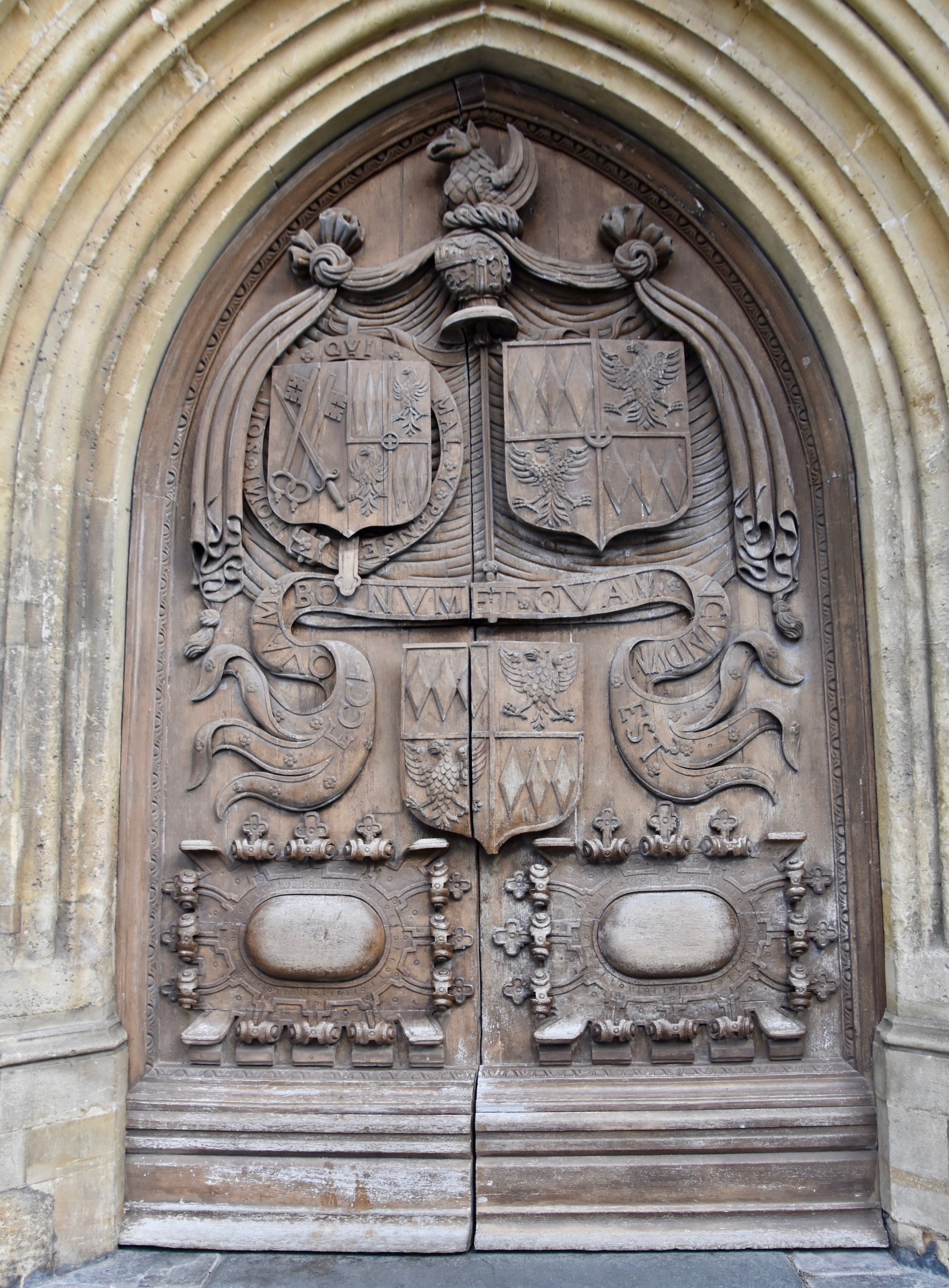
The interior contains a beautiful example of a fan vaulted ceiling, perhaps the finest to be seen anywhere. The great east window portrays the life of Jesus n 56 separate panels.
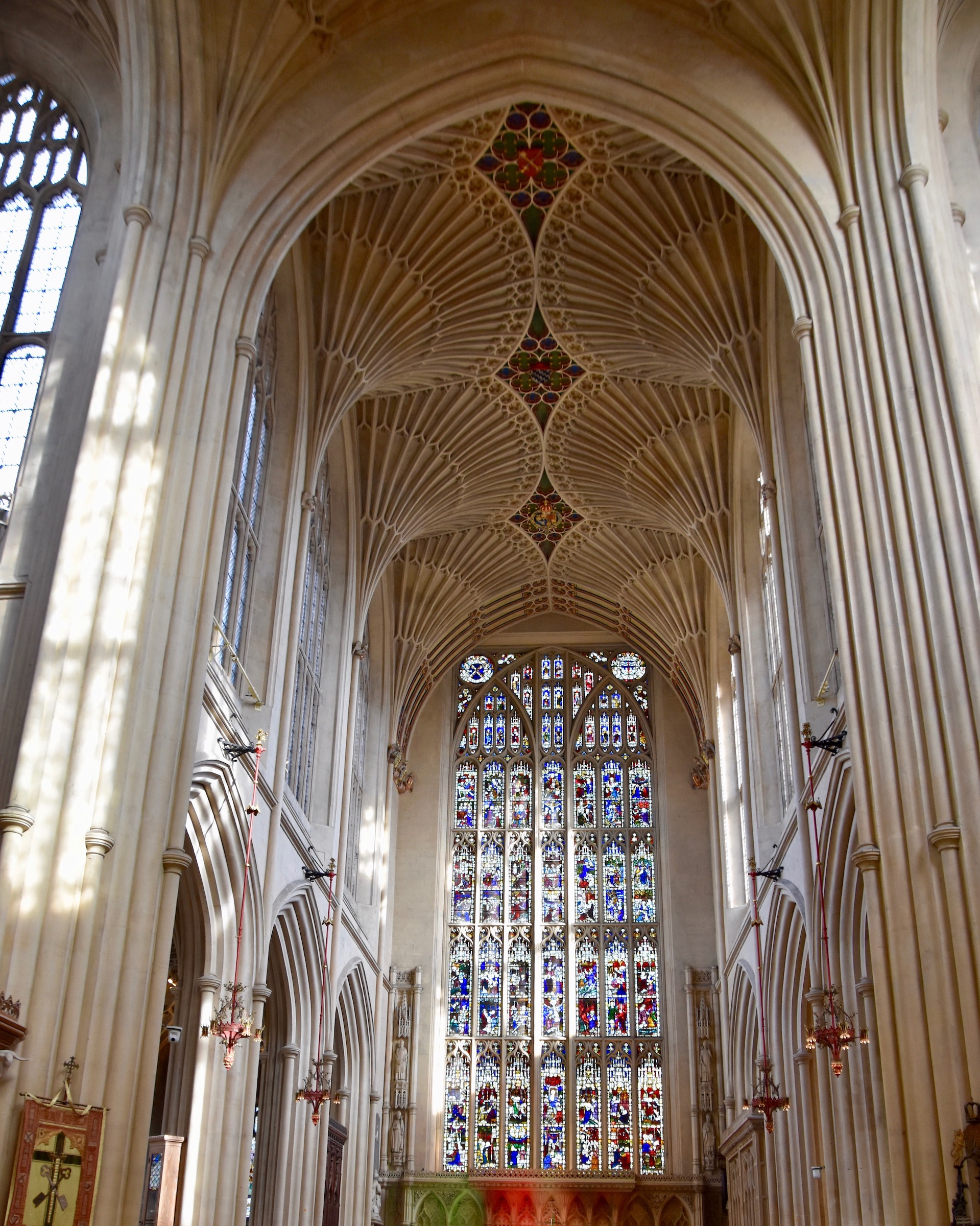
All told Bath Abbey has fifty-two stained glass windows making it one the brighter church interiors from the late Gothic period, so much so that it has the sobriquet, Lantern of the West. You could spend hours looking at each and every scene depicting by those windows, but I prefer just to take them in as a whole and enjoy the overall complexion of light that they create. Below is the west window which tells the story of the Pentateuch aka the first five books of the Old Testament. If you look closely at the lower left hand panel you can see Eve being hauled out of Adam’s prostrate form by a clutch of angels.
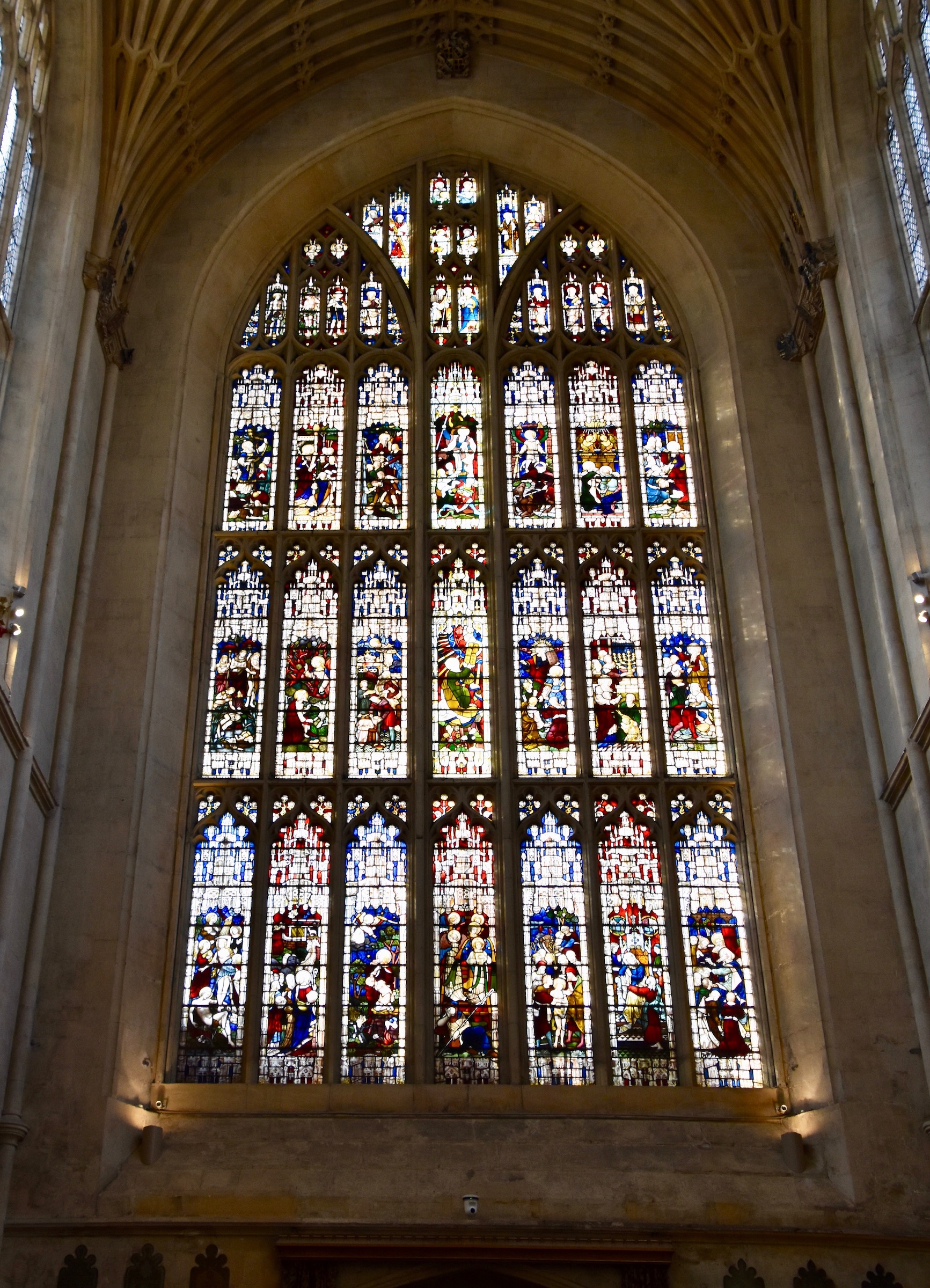
Visiting the Roman Baths
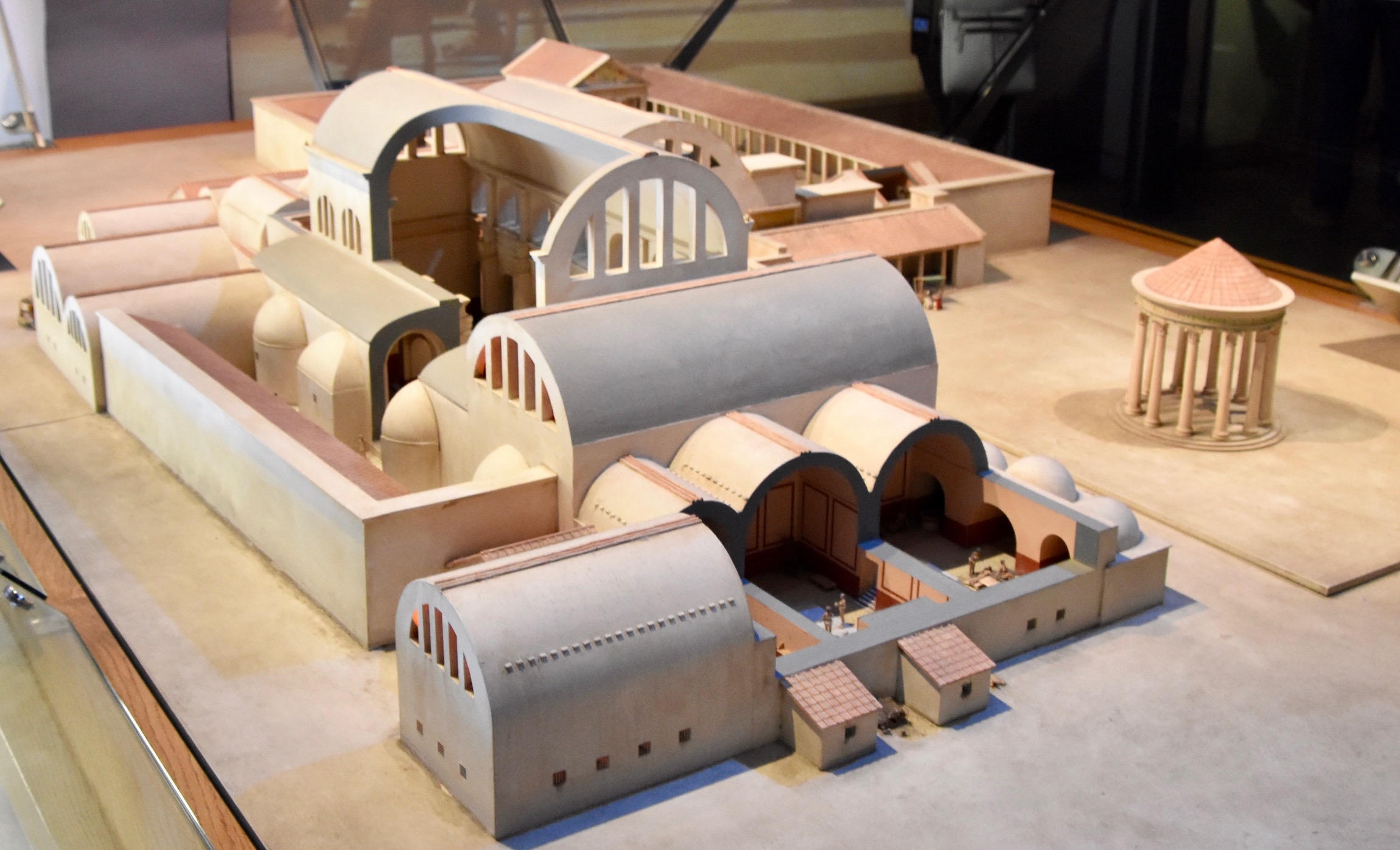
We’ve been visiting Bath for some time now and haven’t even been to what is unquestionably its number one attraction, the Roman baths. After Stonehenge this is the most popular tourist attraction in southwest England and in 2022 over 850,000 people paid a visit. Unlike Stonehenge which is open air, the Roman baths are confined to a relatively small space so that it is necessary to strictly control the number of visitors at any given time. This means buying timed entry tickets well in advance if possible. You can do that by following this link.
The first Roman structure on the site known as Aquae Sulis was a temple to the goddess Sulis Minerva. She was syncretic deity combining the local goddess Sulis who was already being worshipped by the pre-Roman Celts at the site of the thermal springs with the Roman goddess Minerva who in turn was a derivation from the Greek deity Athena. Once the temple was built the industrious Romans got to work on the baths around 70 AD, creating the complex shown in the model above. They were in use for well over 350 years before disappearing under the ravages of time once the Romans left Britain. They were completely unknown to the residents of Bath until the late 19th century when they were discovered by accident and instantly became an archaeological sensation. They were first opened to the public in 1897.
What you see today at the Roman baths is a combination of the original buildings and the late Victorian additions intended to make the visit more enjoyable, such as the statues of Roman emperors that were placed around the viewing terrace. Again, like the walking tour, I’m only going to highlight a few of the many great features of the Roman baths starting with the iconic view from the Terrace looking down at the bath that most people associate with the site. You really do get a tingle in your spine when standing here as you look back almost 2,000 years and try to imagine, not the tourists you see below, but the toga clad Romans going about their daily business so long ago. If this was in Italy or Greece that might be easy, but here in Bath so far away from Rome and in a setting so profoundly different, it’s not that simple, but sure as hell worth the effort.
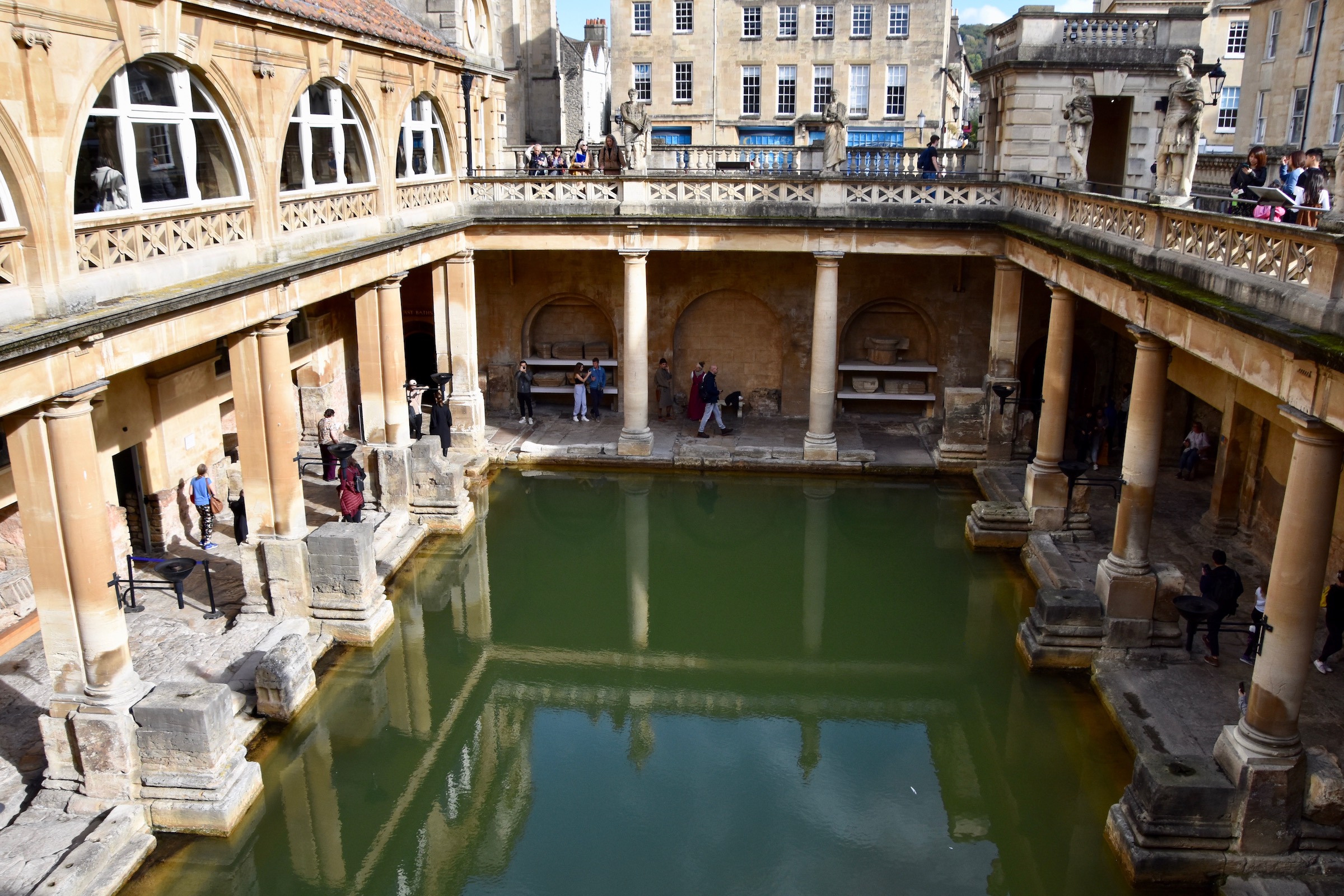
Deep in the depths underneath modern Bath you can still see the original hot springs that were responsible for virtually everything that happened here since time immemorial.
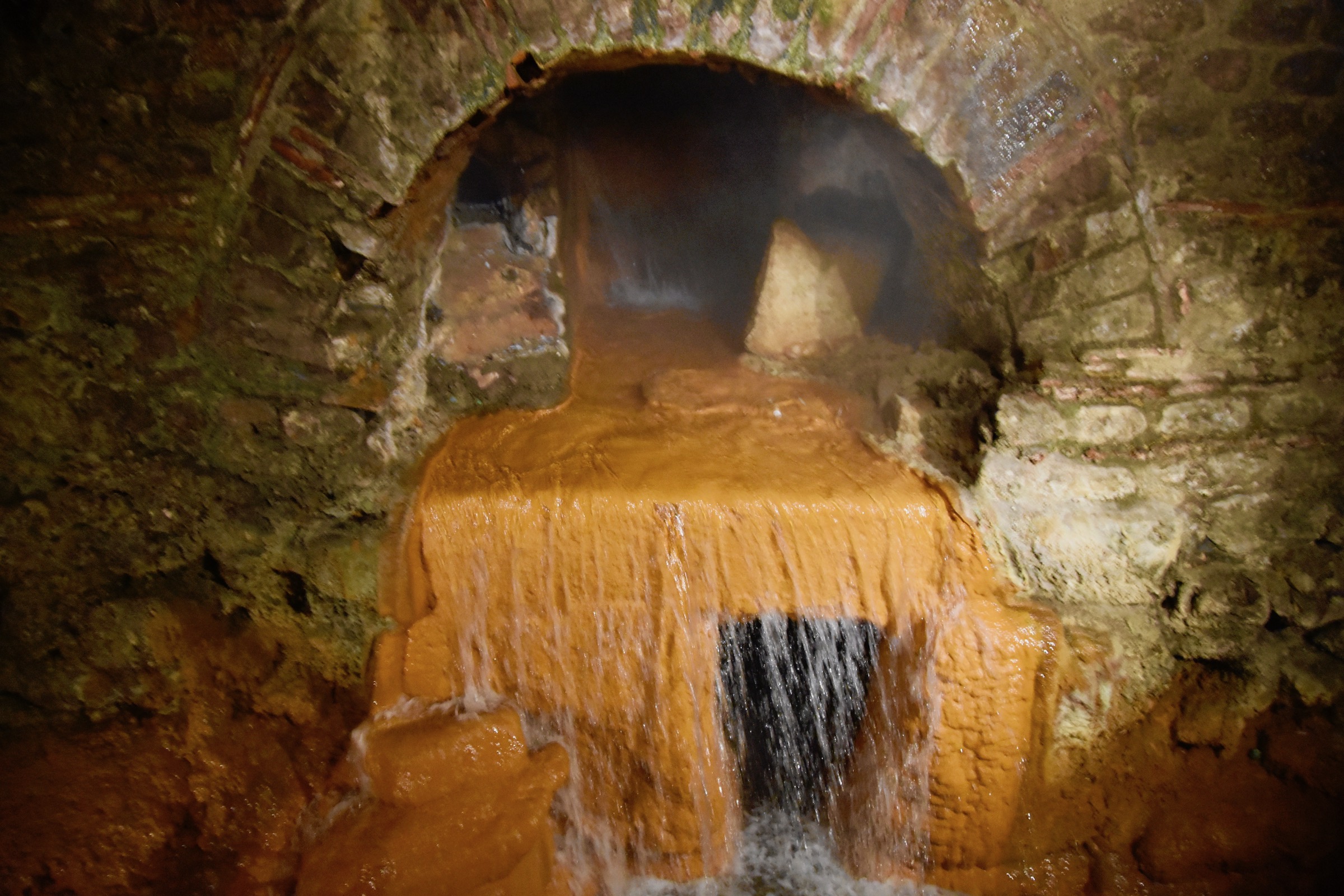
The waters were first diverted into what is known as the Sacred Pool which was not used for bathing but rather as a place to offer sacrifices to Sulis Minerva. People would throw things in much as we still do with wishing wells.
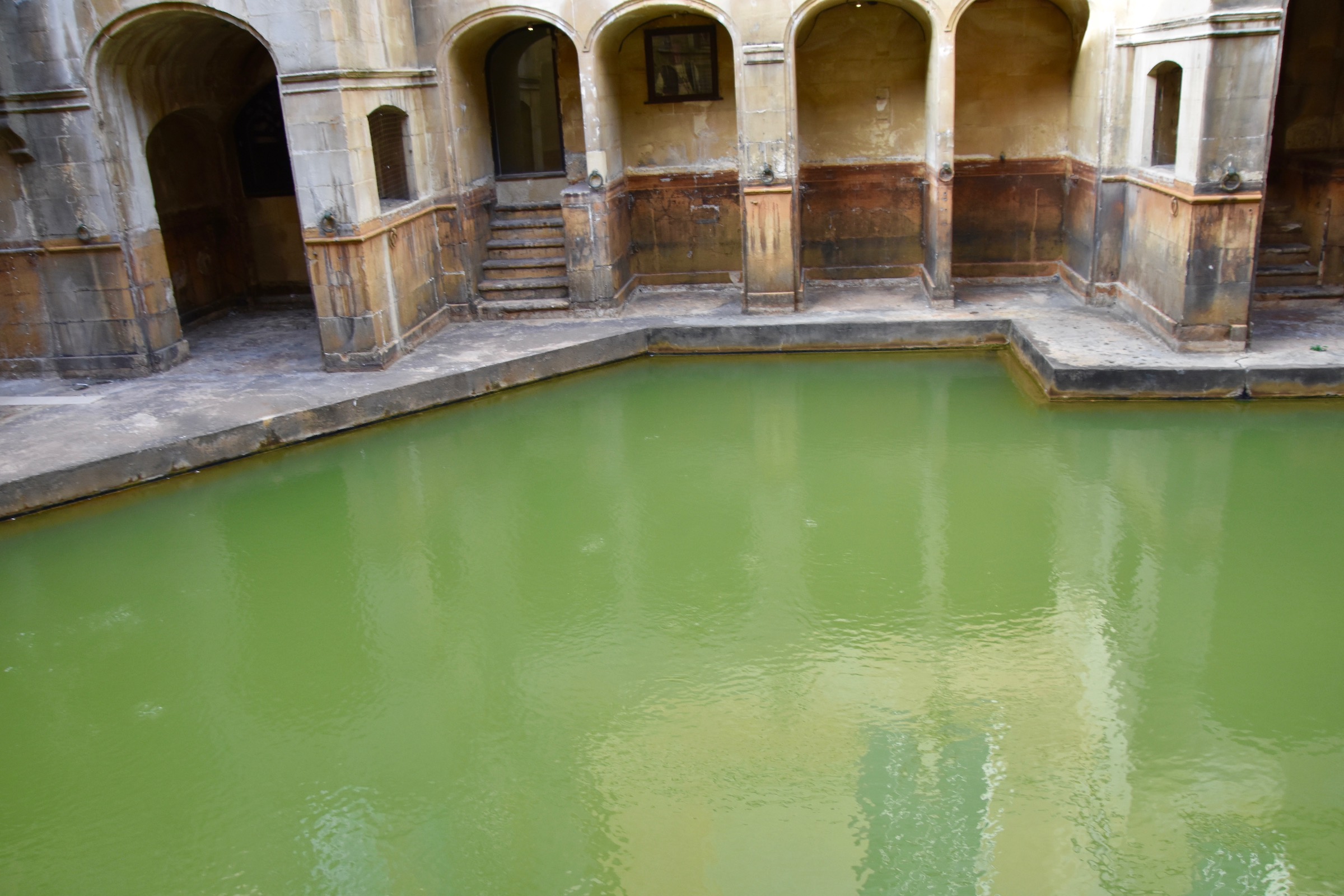
Hundreds of artifacts have been retrieved from the Sacred Pool, none more interesting than these lead or pewter objects known as curse pieces, and that is exactly what they are. People would inscribe imprecations against thieves who had stolen something from them, often their clothes at the bath, and ask for the goddess’ help in returning them. Over 130 of these were discovered only in 1979 and they provide a direct link to the minds and thoughts of the contemporary Roman Britons who created them.

While there are hundreds of artifacts on display there is one you will never forget. This is the gilt bronze head of Sulis Minerva unearthed in 1727, one of only three gilt bronzes ever found in Britain. It is a beautiful and profound piece that has a true majesty that must have awed the passersby as they made their way from the temple to the baths.
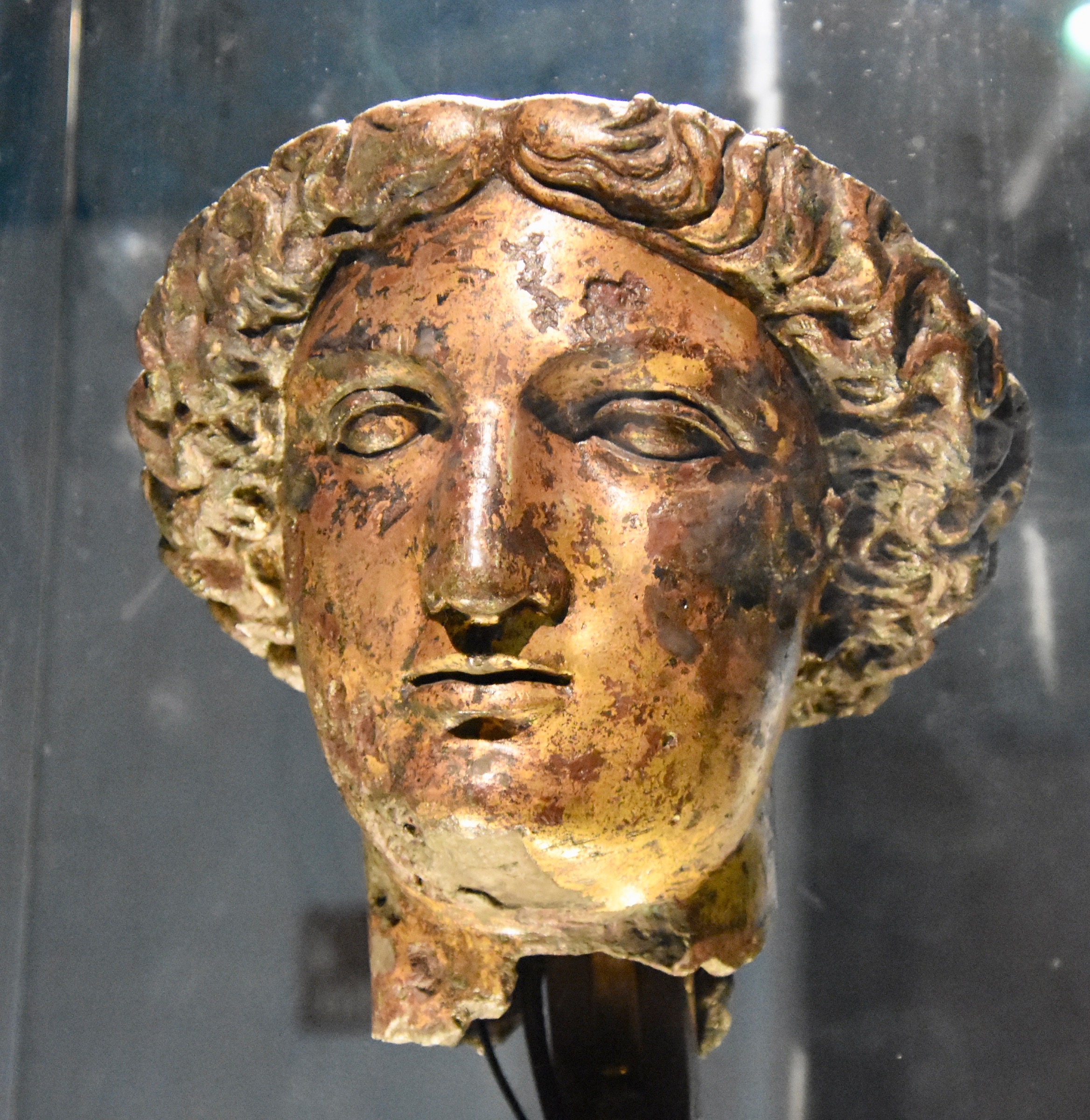
This square block of stone is called a haruspex and it was believed to have oracular powers. Some archaeologists think the full statue of Sulis Minerva might have stood atop this stone.
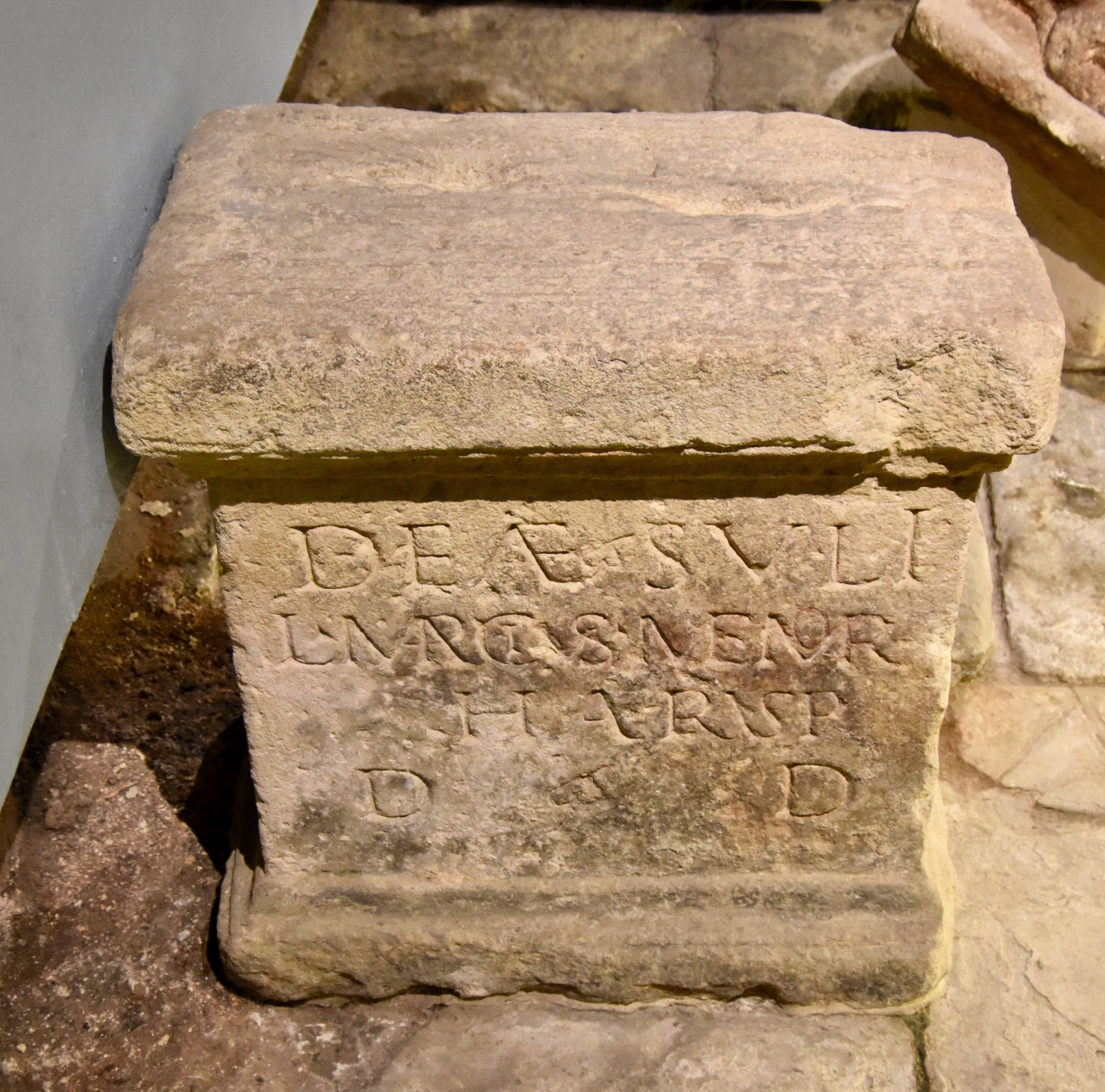
The last item I’ll feature is this religious mask made out of tin. I couldn’t help but be reminded of the famous golden ‘Mask of Agamemnon’ in the Greek Museum of Archaeology in Athens. Found in one of the bath drains, it is another one of a kind object that you can only see by visiting the Roman baths.
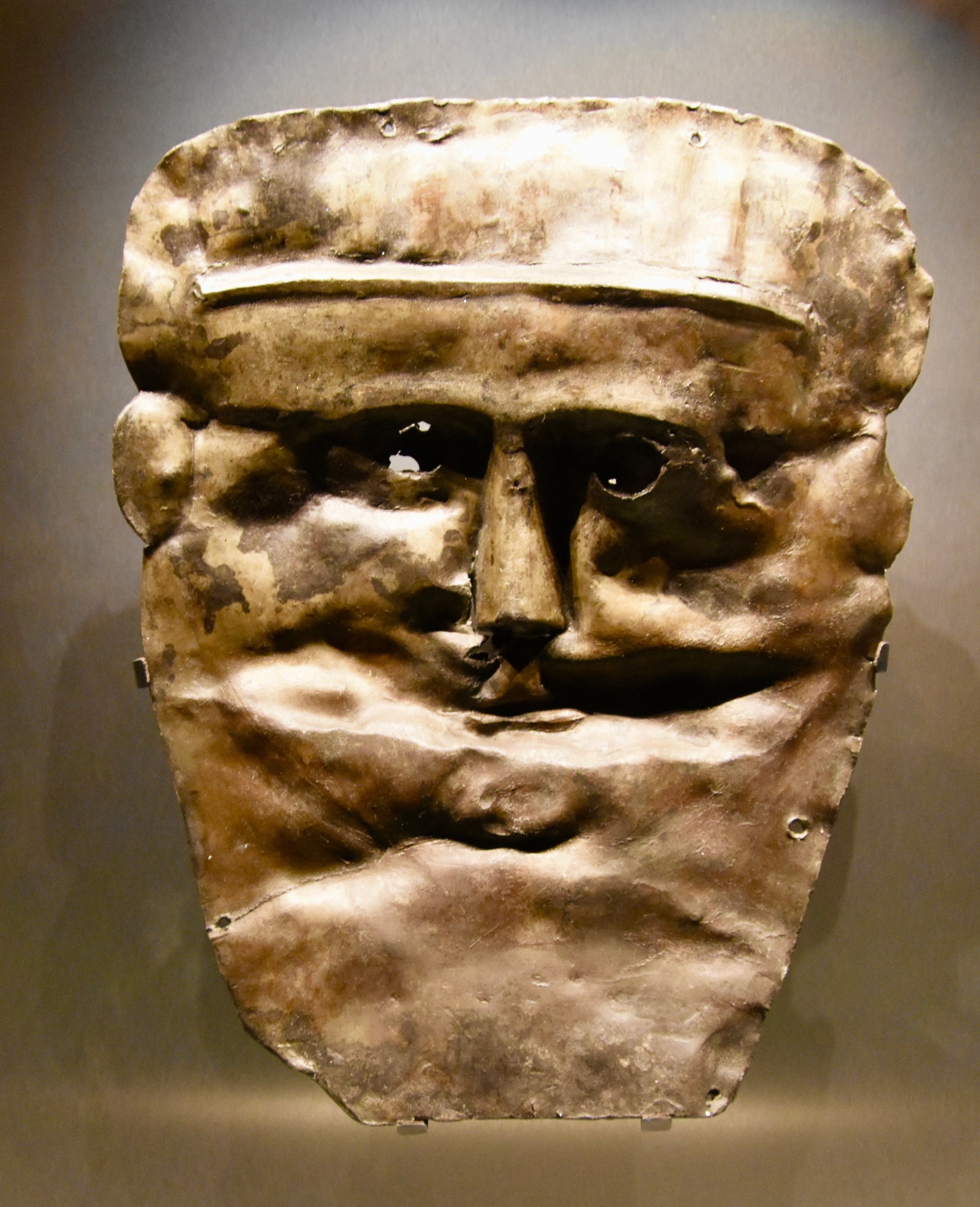
If you haven’t been given enough reasons to make Bath your next British destination, I’ll add a few more, starting with a walk in the woods.
The Bath Skyline Walk
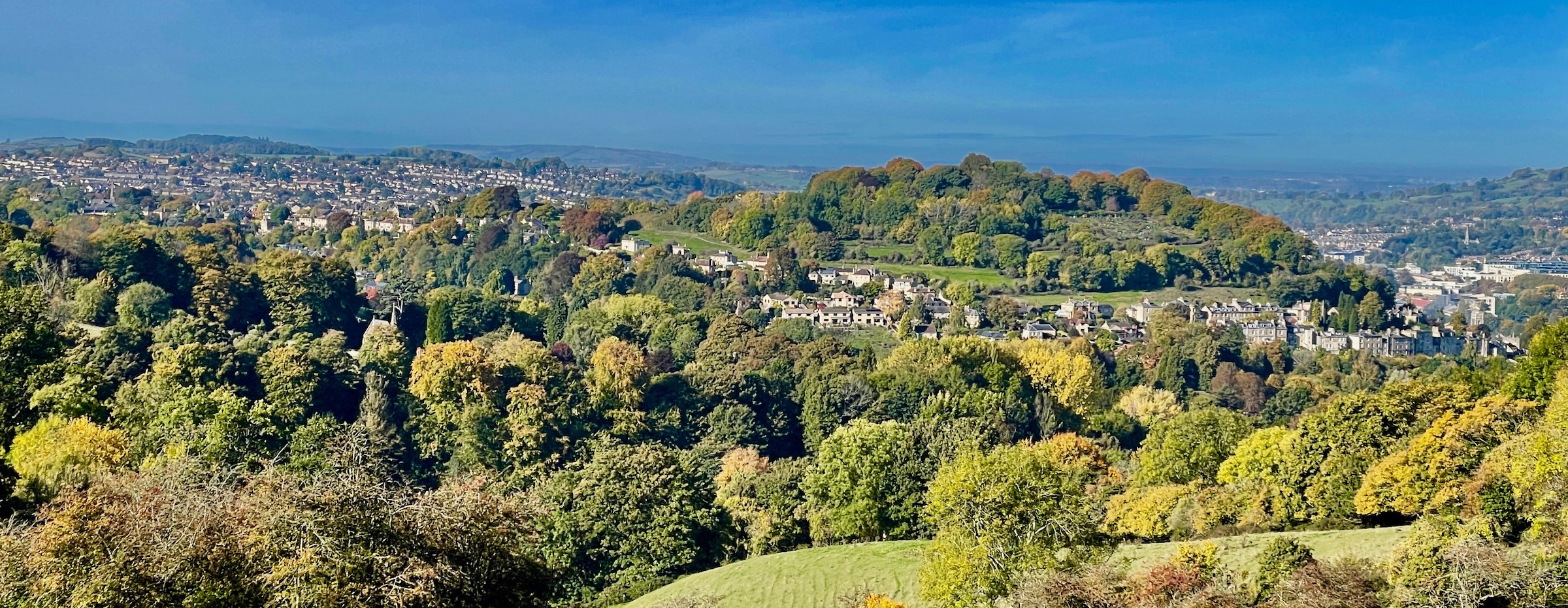
One of the great things about Bath is that it is small enough that you can be out in the English countryside in less than ten minutes from the Georgian centre. The English are among the greatest rural walkers in the world and have created a series of both long and short country hikes that are the envy of the world. The National Trust is responsible for the Bath Skyline Walk which is a three mile circular trail that takes one completely around the city through woods, fields and pastures with great views of Bath from many vantage points. Alison and I were able to access the trail within five minutes of leaving Dukes Hotel.
It had started out as a foggy morning, but as the photo above shows it soon cleared up.
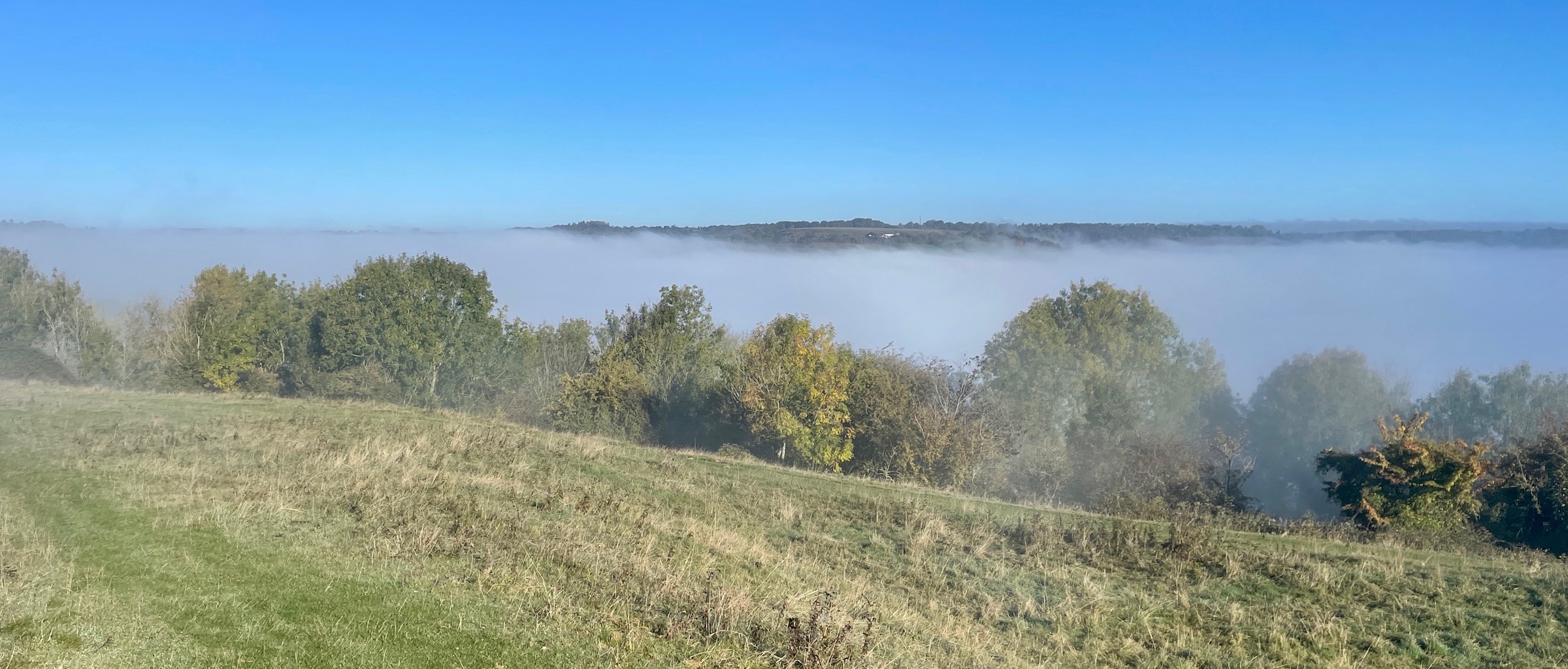
There is just something about walking in the English countryside that is different from almost anywhere else you might trod your feet. Whether it’s the lovingly preserved hardwood forests, the hedgerows or the views of manor houses and rural churches, it all adds up to the very definition of bucolic.
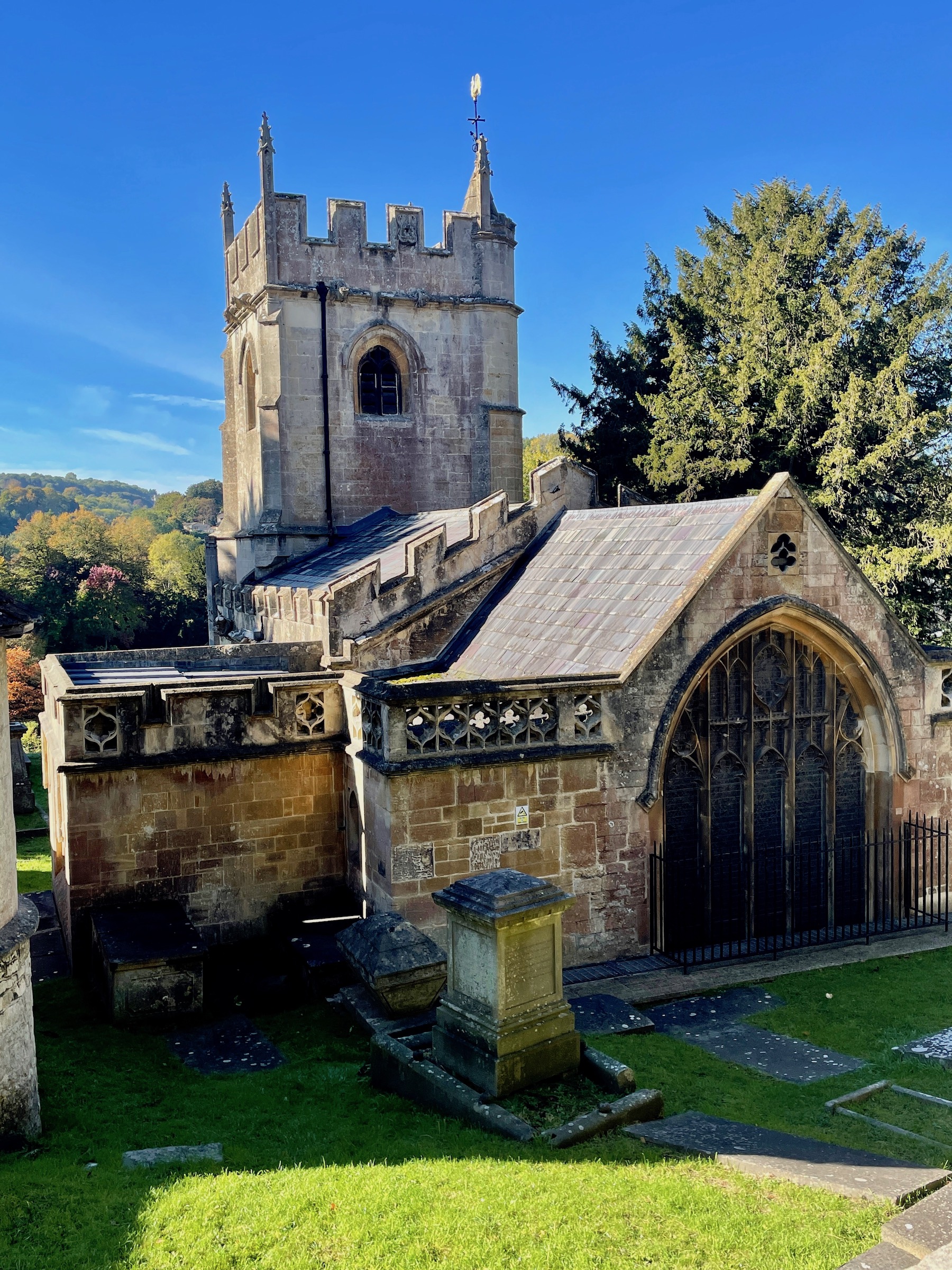
We were fortunate enough to meet up with an elderly gentleman who was out for his morning constitutional as without him we would have made a couple of wrong turns which had already done before crossing his path. He led us though a herd of dairy cows that were quite unimpressed by our presence.

And down Monument Hill back into Bath where we had worked up quite an appetite for another English tradition that I cannot get enough of, the Sunday roast.
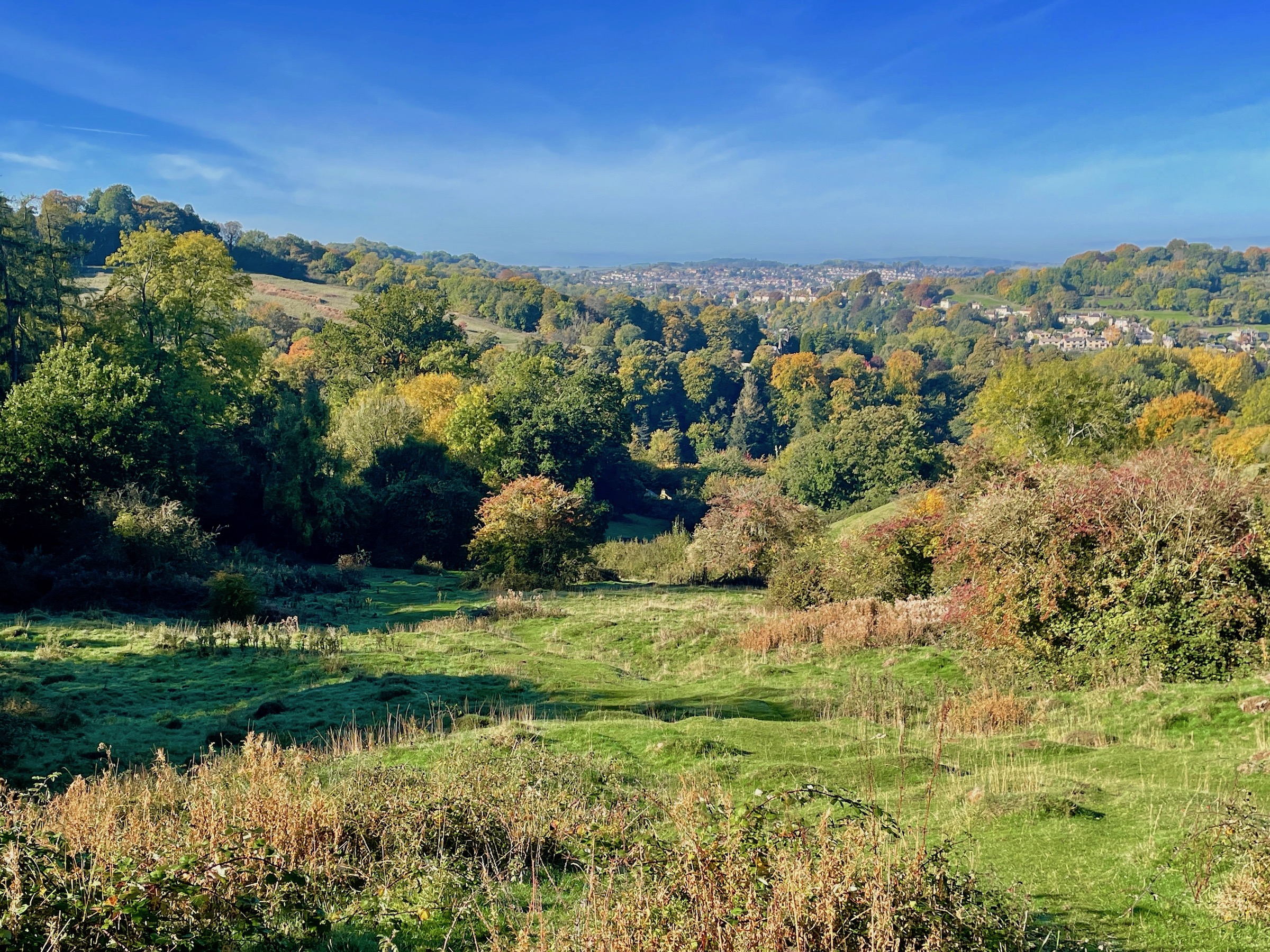
The Sunday Roast
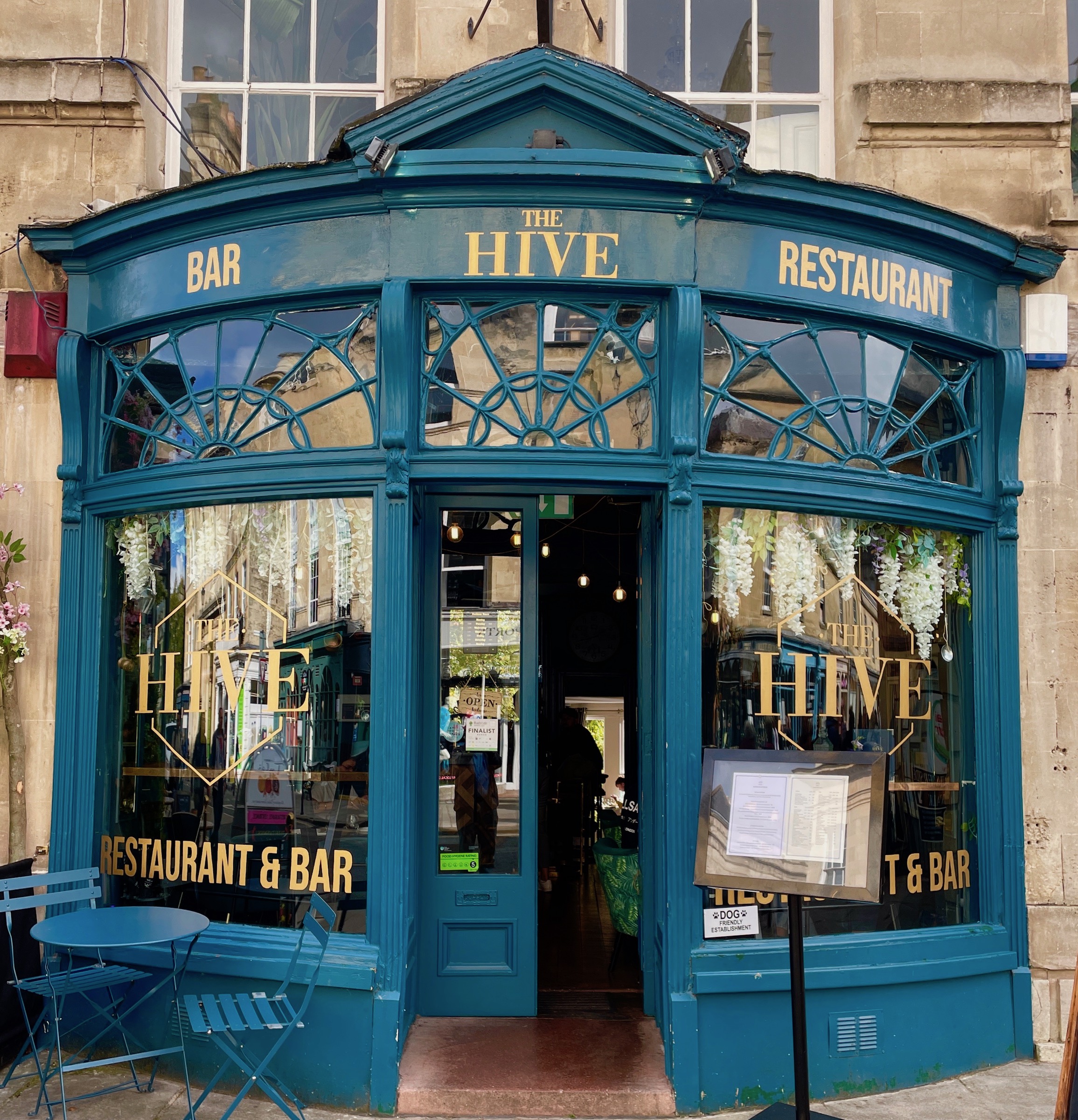
The English set aside Sunday afternoons for their great feast of the week, Sunday roast. We had enjoyed one the previous week at the Mayflower Pub in London and today after our walk I was looking to enjoy one in Bath. The folks at Dukes recommended The Hive which was just down the street with a great location right above the river. We did not have reservations and were fortunate enough to snag the very last available table and boy I’m glad I did.
I don’t know why the English once had such a bad reputation for their cuisine, but that is long behind them now as some of the best restaurants on the planet are found throughout the county. I’m not claiming The Hive is in that category, but take a look at this offering for two. Now that’s a groaning board! Those Yorkshire puddings when splashed with gravy were incredible. We don’t indulge in a food coma inducing meal very often, but once in a while it is more than worth, calories and cholesterol be damned.

Bath is a city with many great places to eat with a great variety of both English and other cuisines. One place every tourist needs to drop into is the legendary Sally Lunn’s, one of the oldest restaurants in the world where you need to sample a Sally Lunn Bunn (yes with two n’s). Cooked from a recipe created by Sally Lunn over 340 years ago that is still a secret, it goes perfectly with afternoon tea.
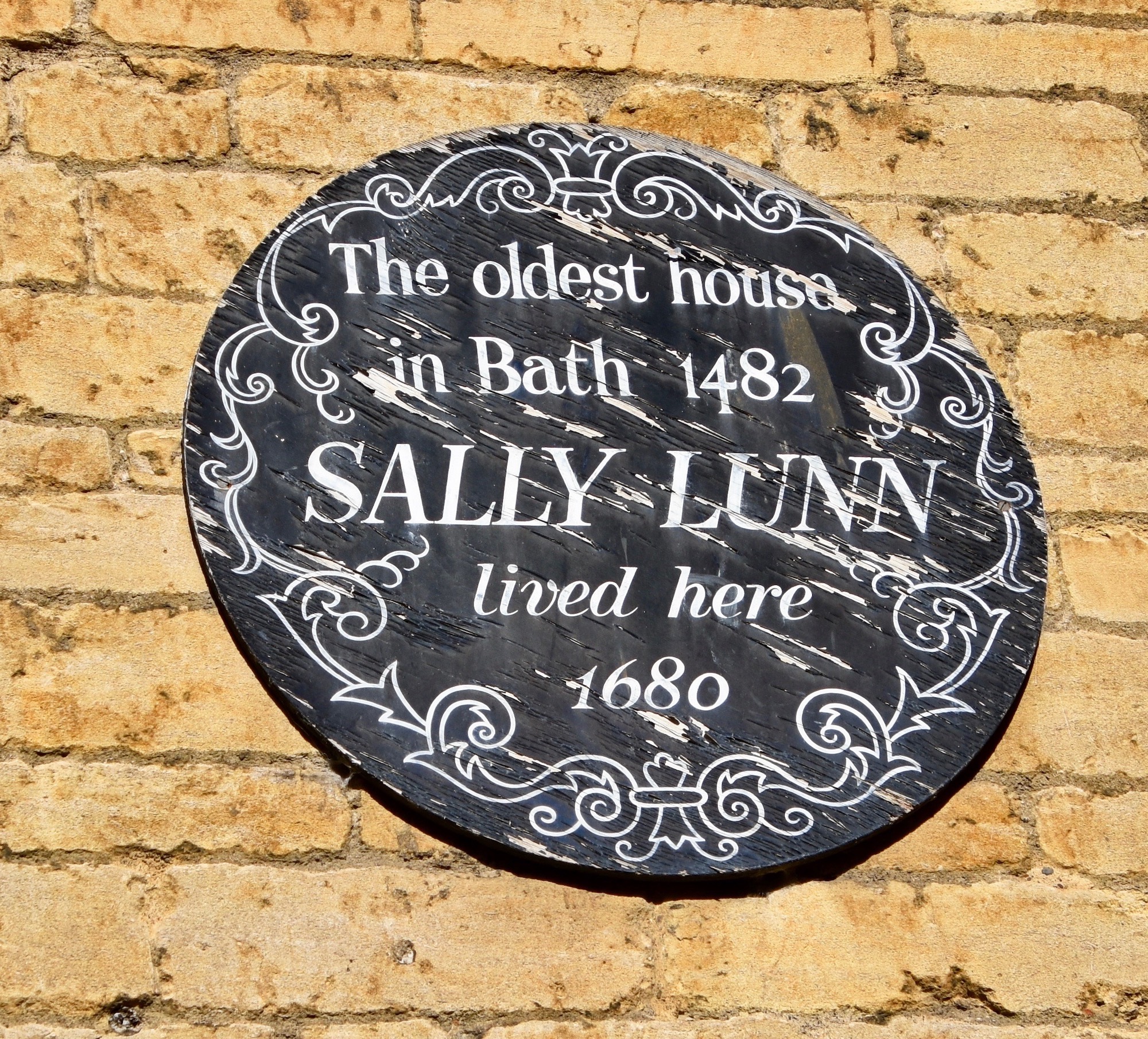
One last place I highly recommend patronizing while in Bath is Walcot House, which has an upscale menu served in a very relaxing atmosphere. The desserts are particularly memorable as these quite different interpretations of chocolate mousse and nougat demonstrate. Wash them down with finely aged port and you have the perfect ending to a perfect stay in Bath.
